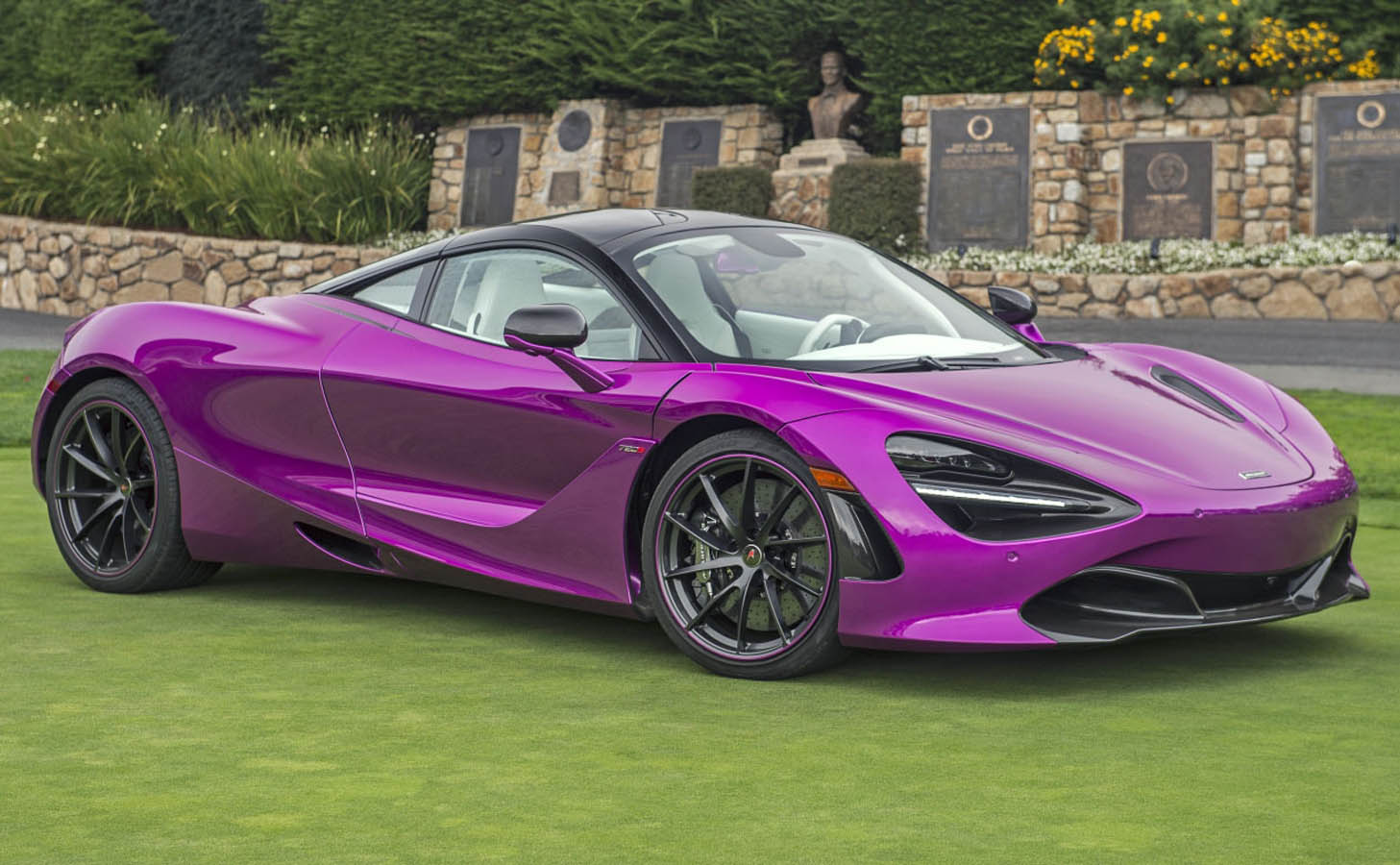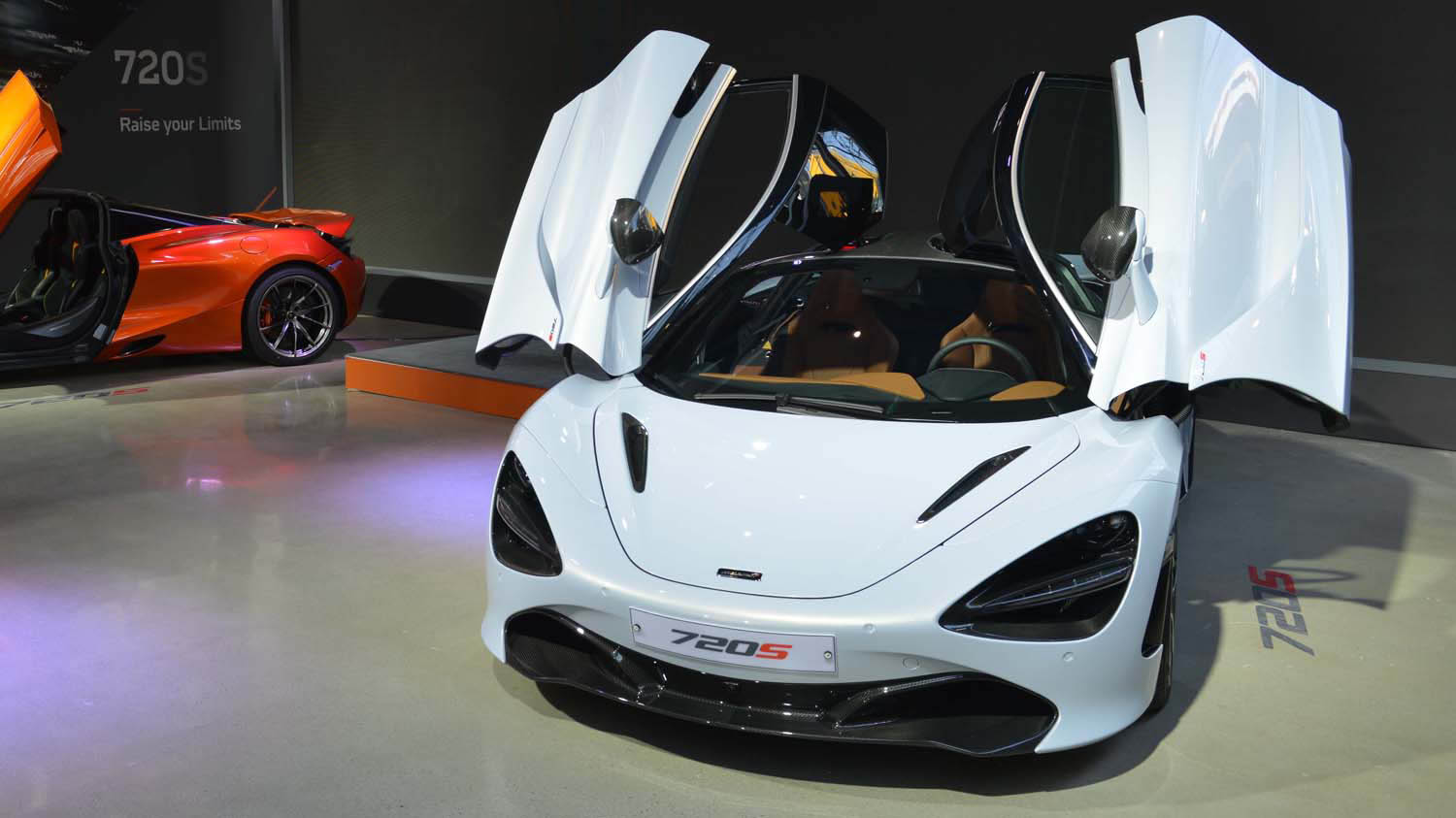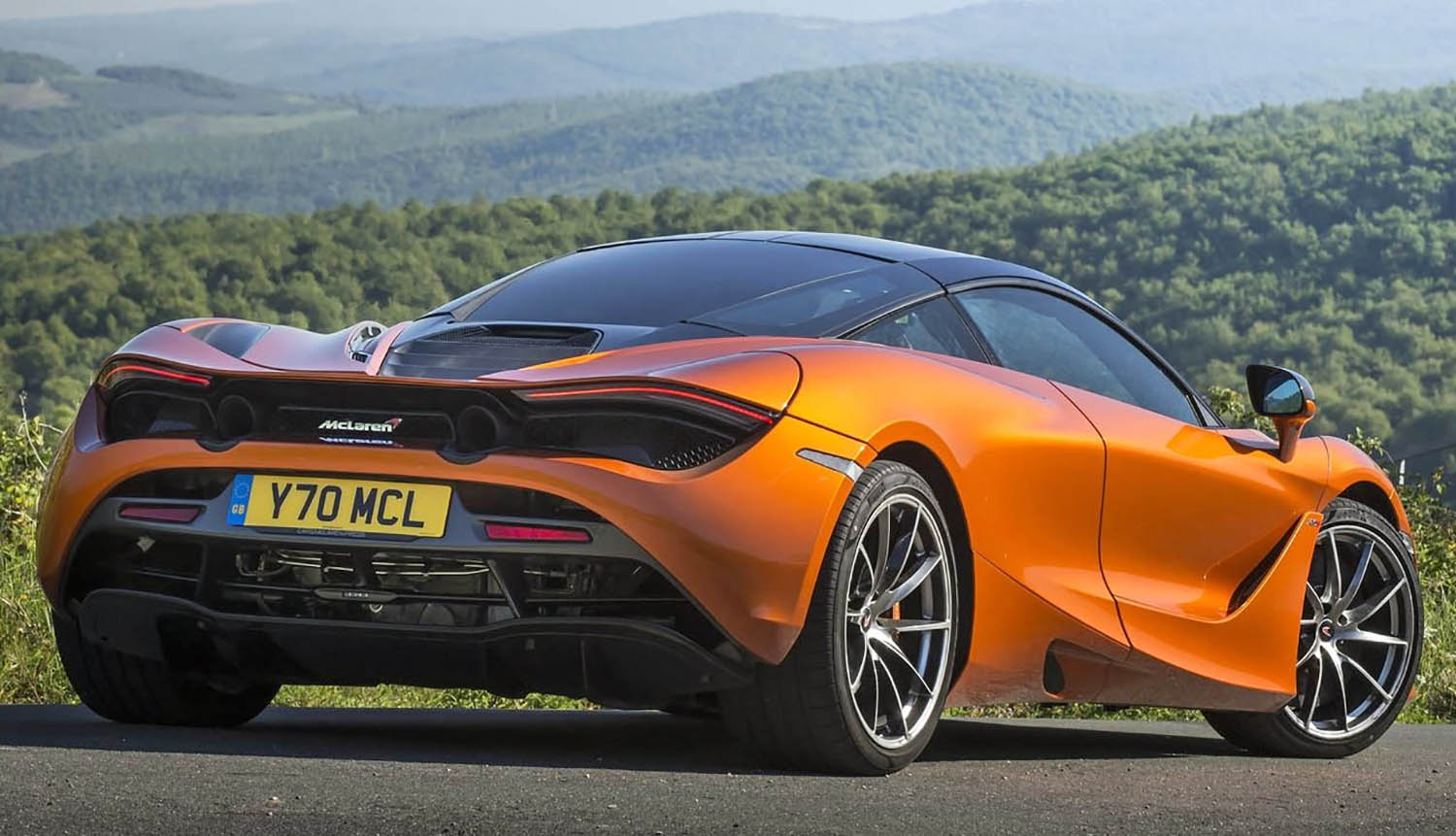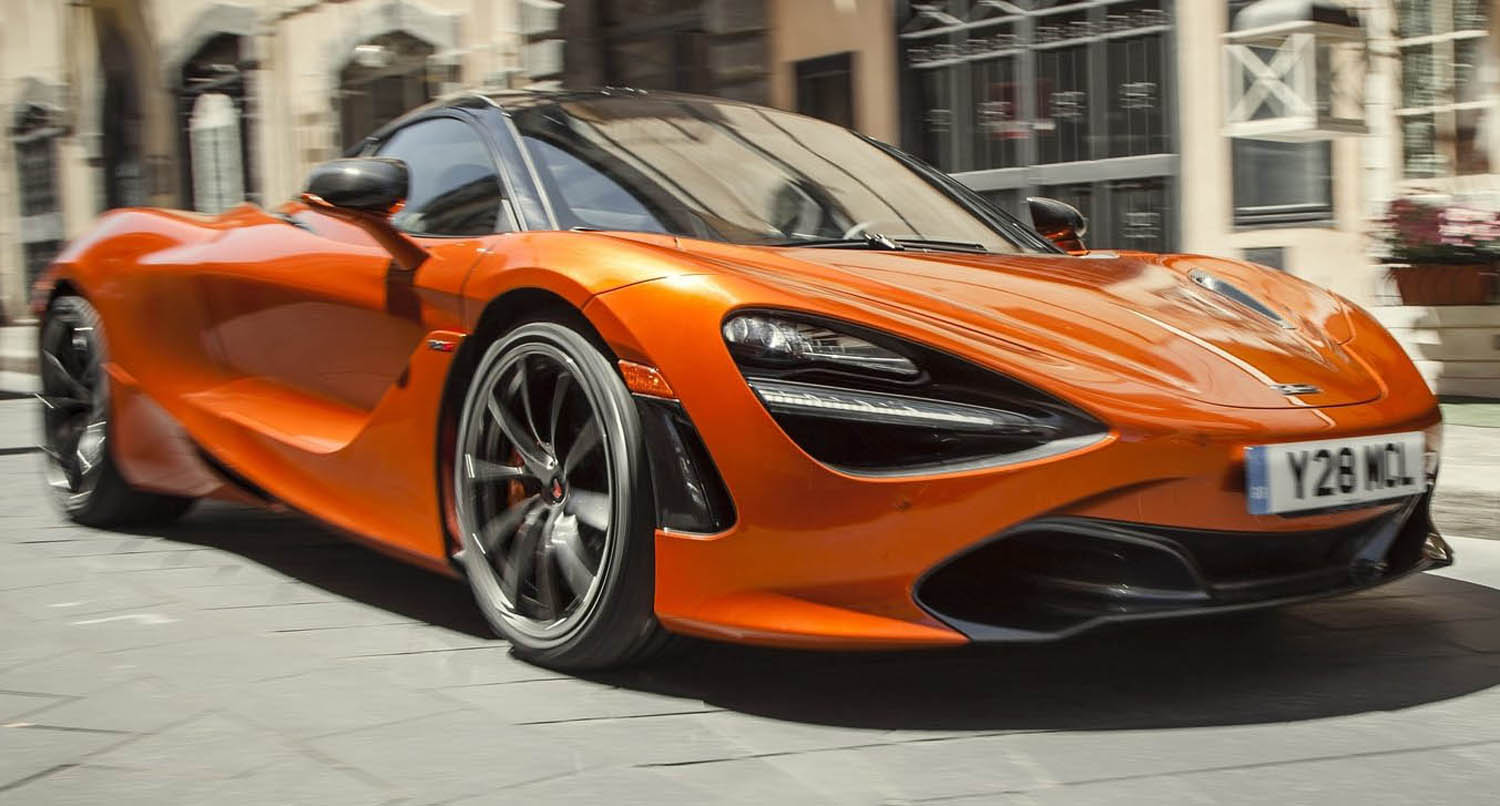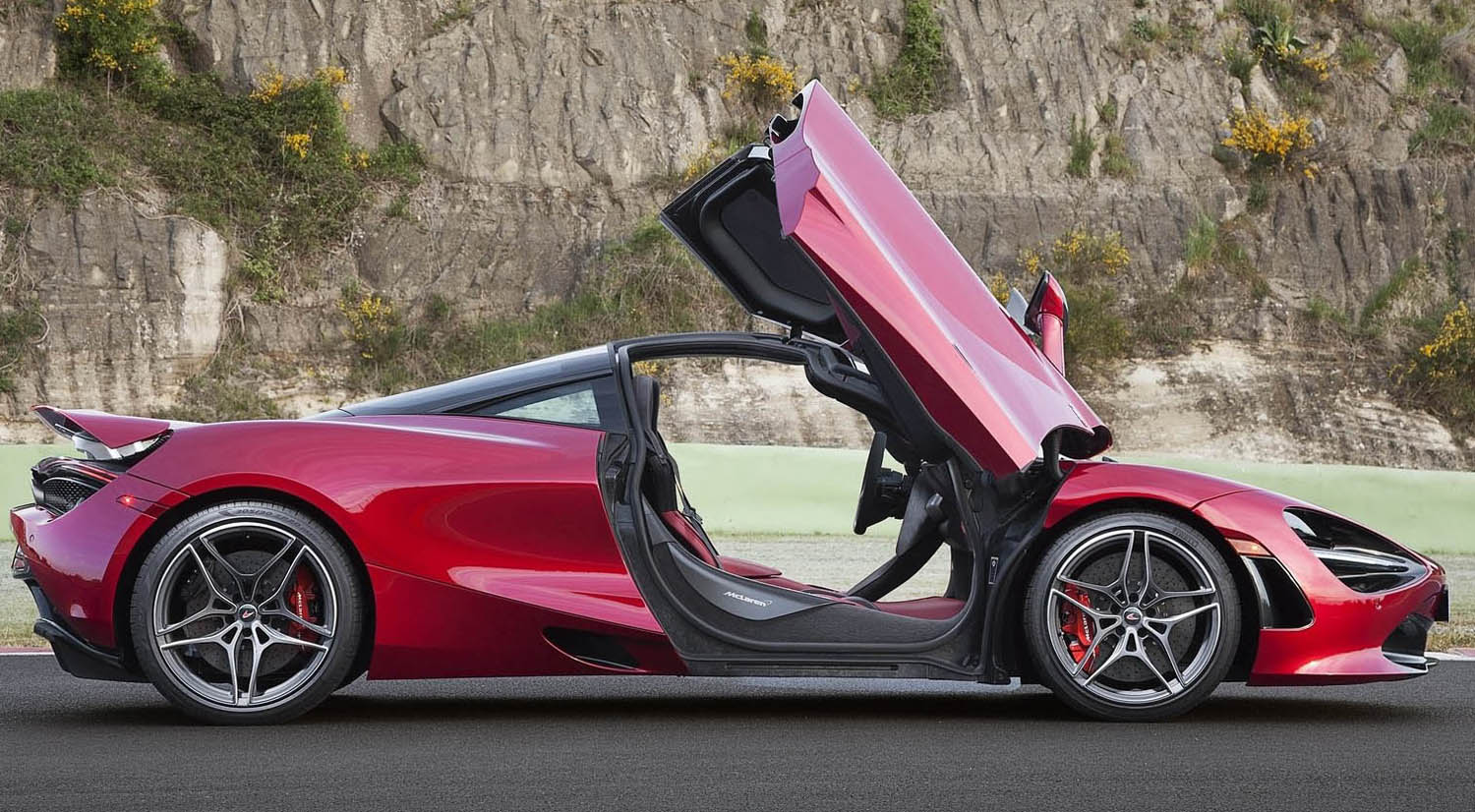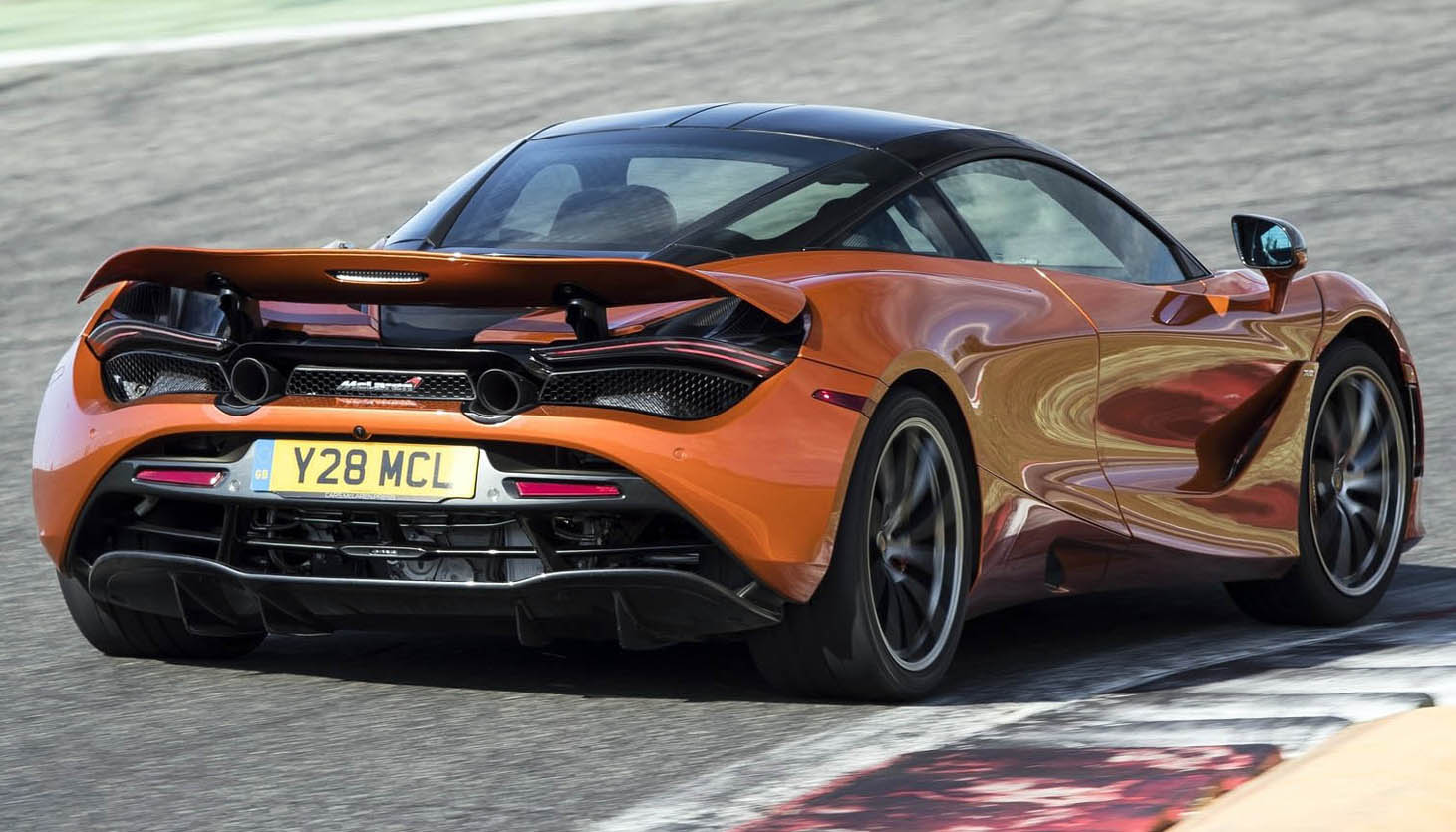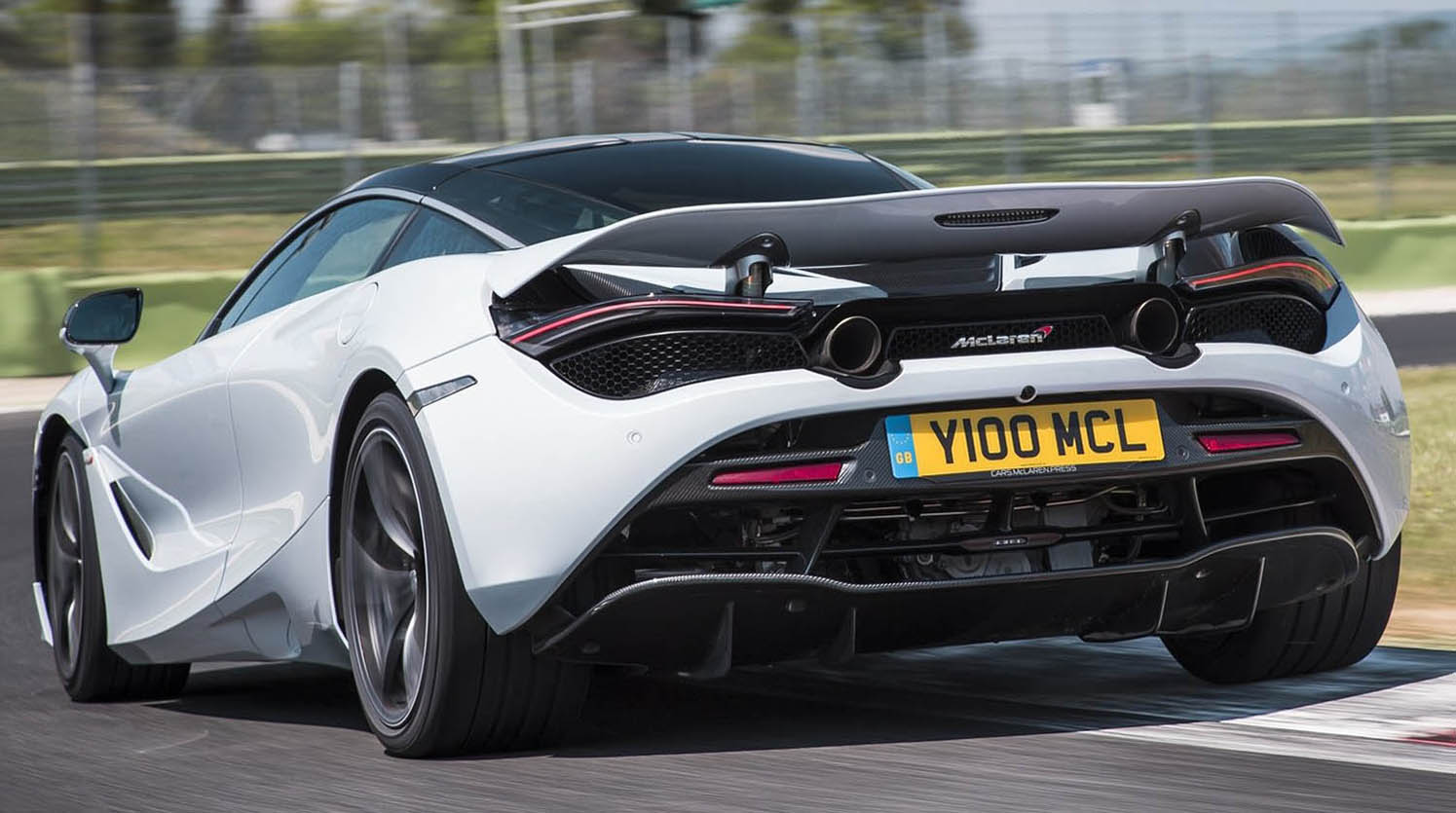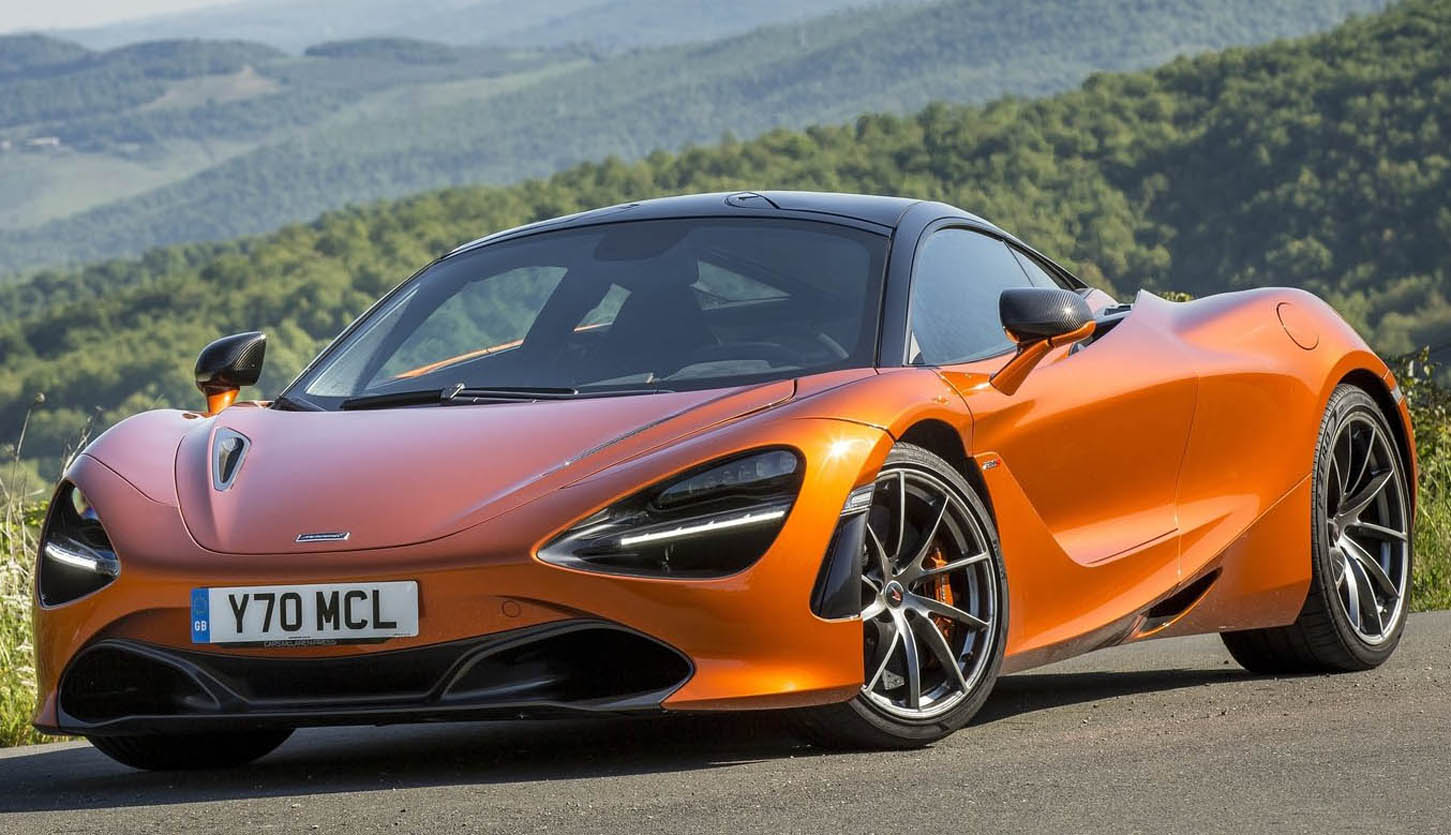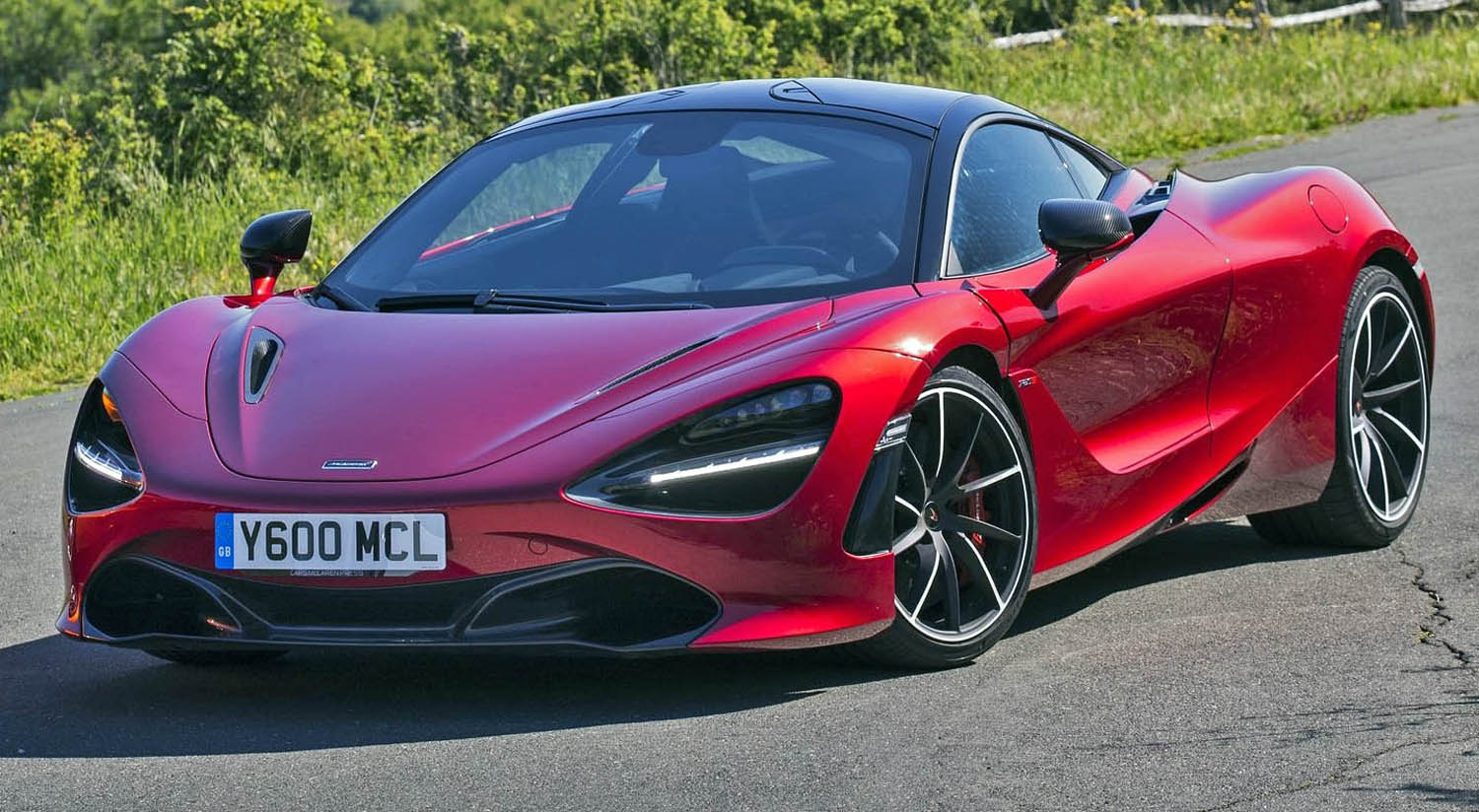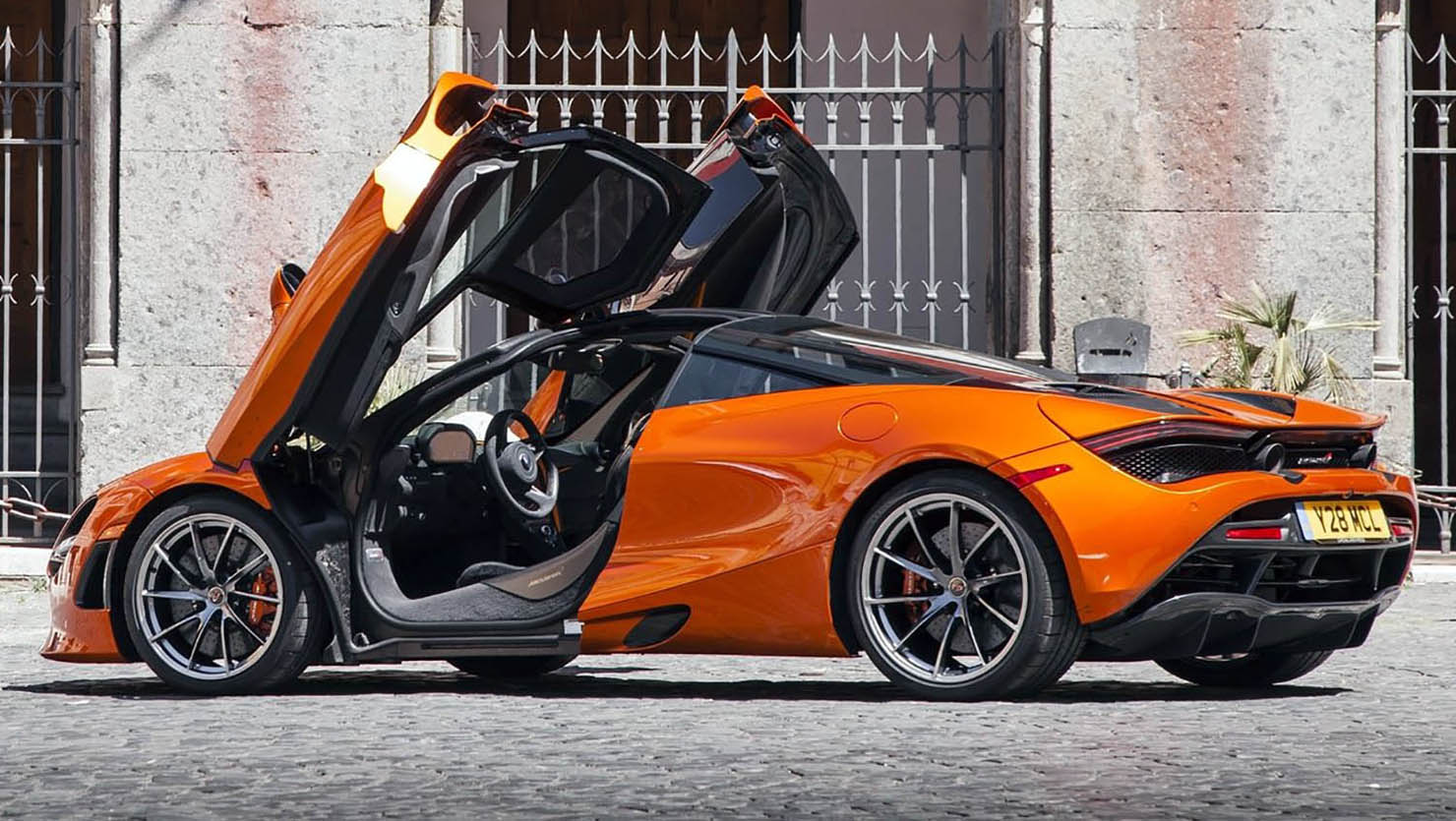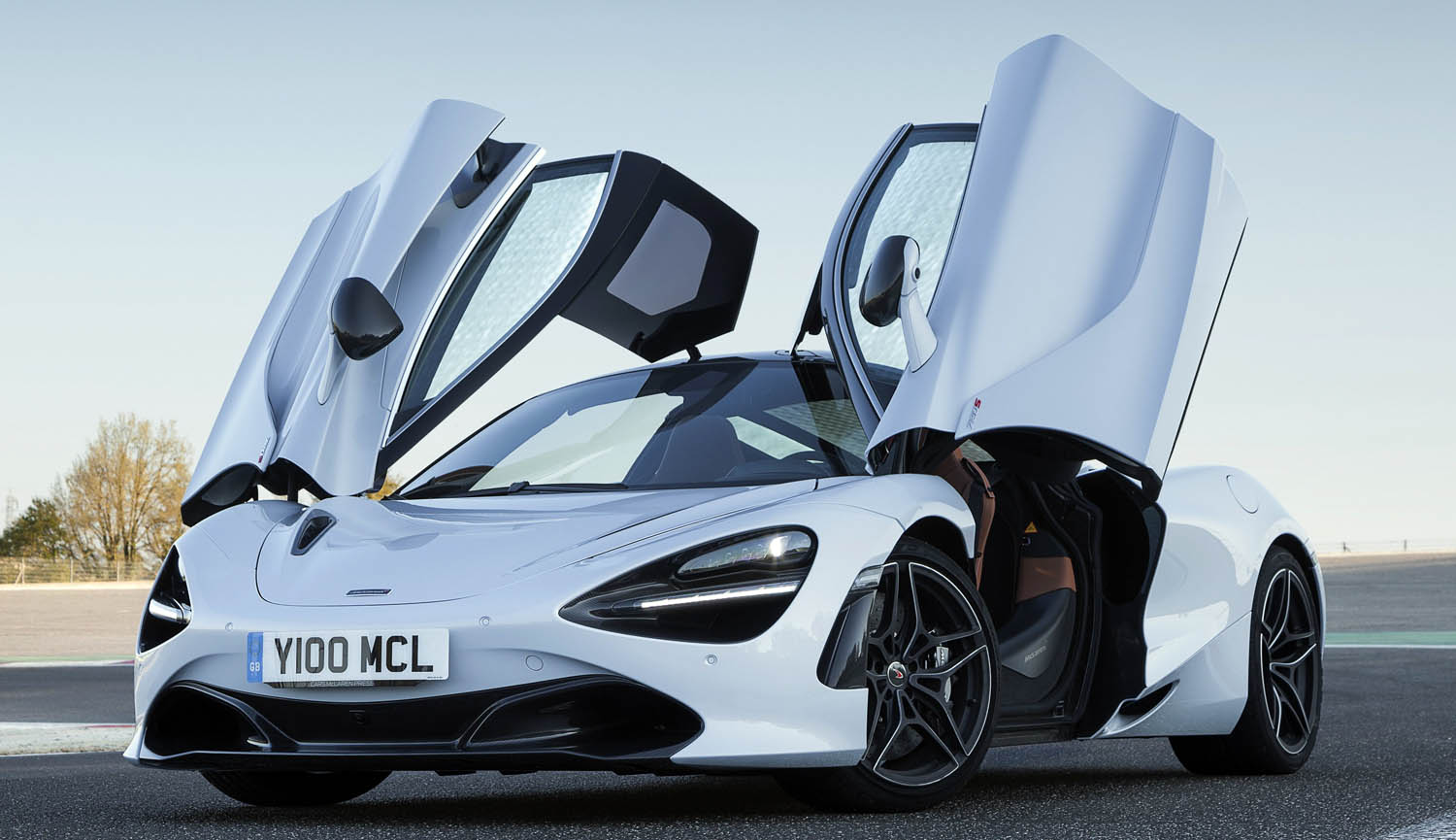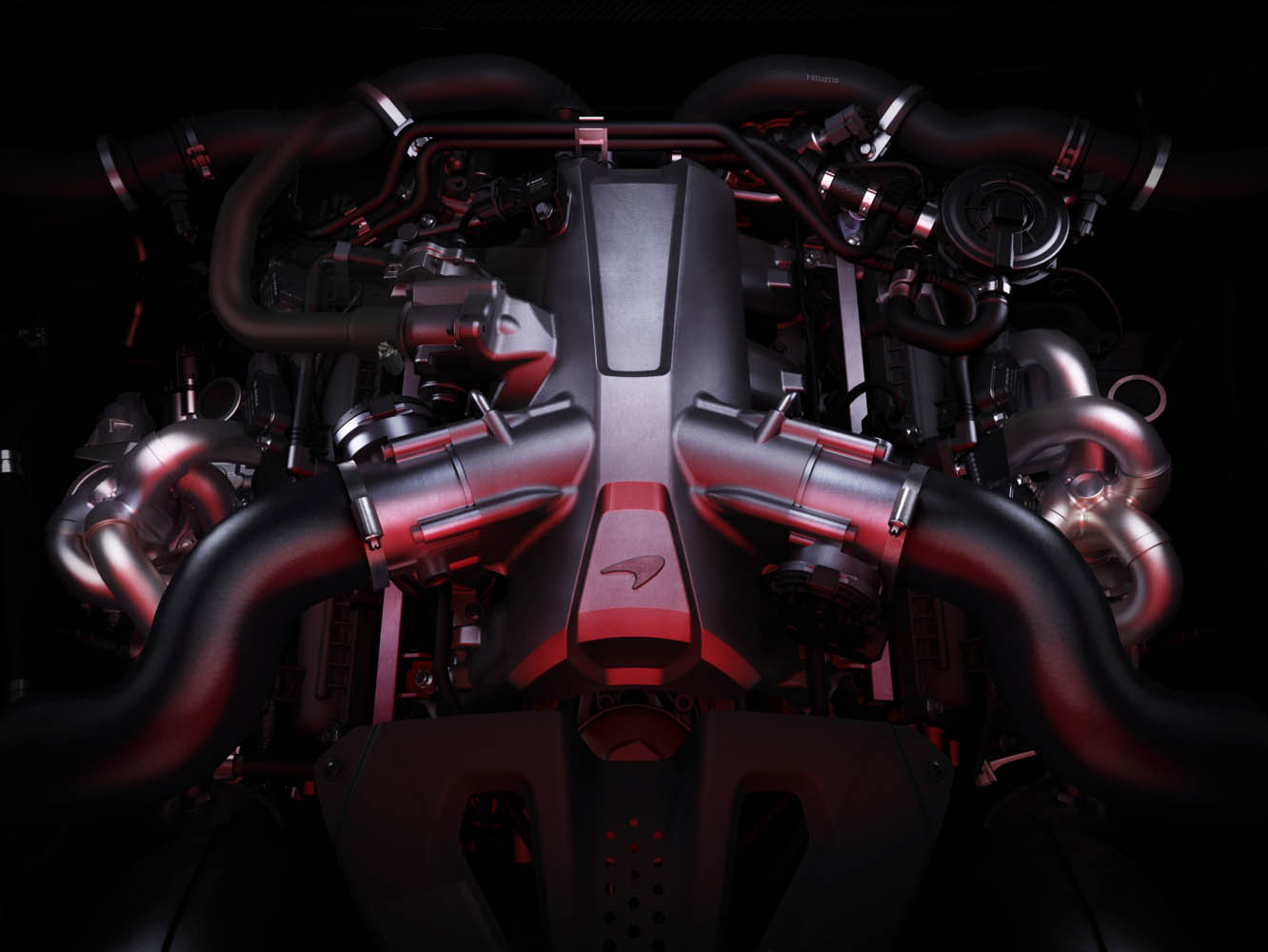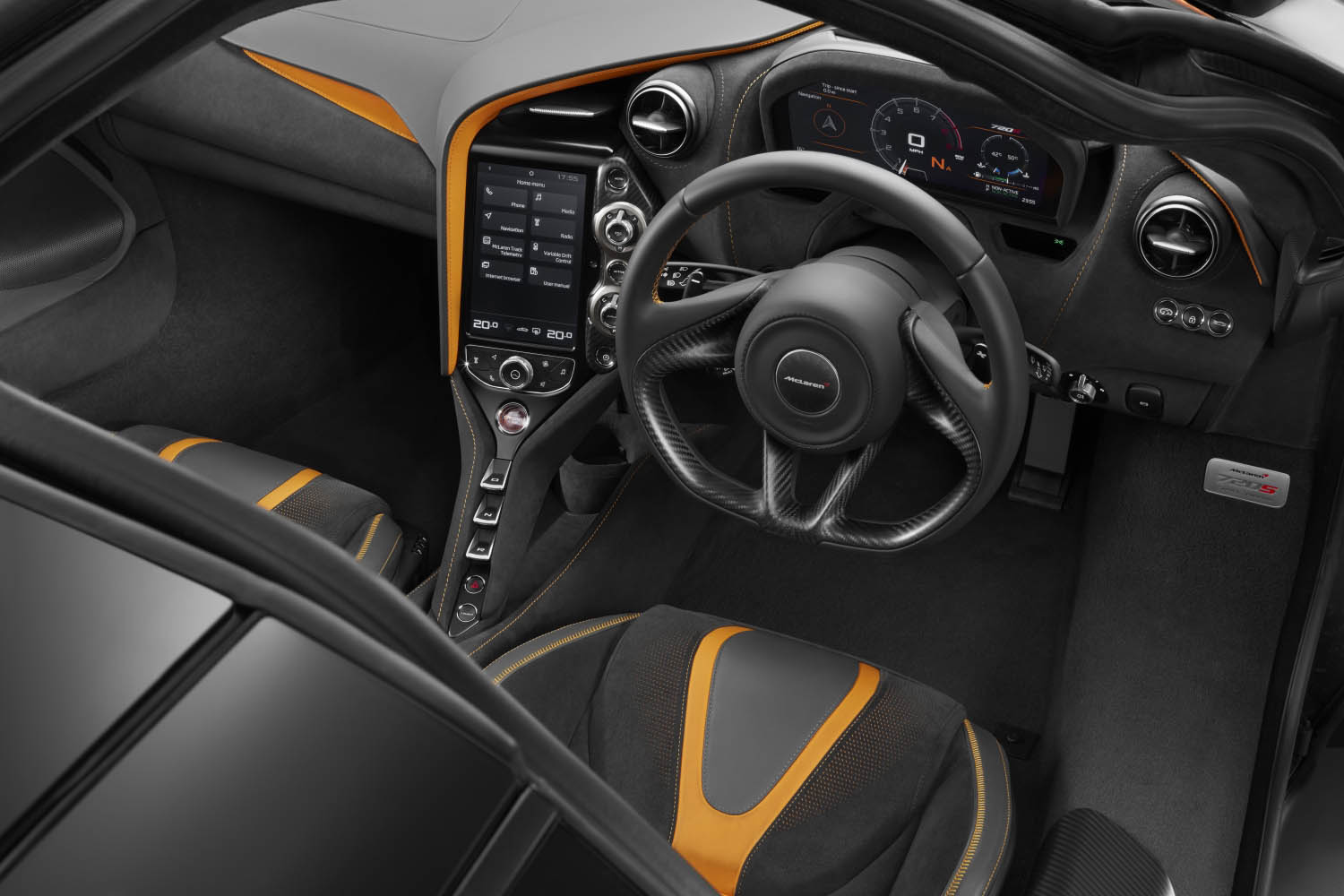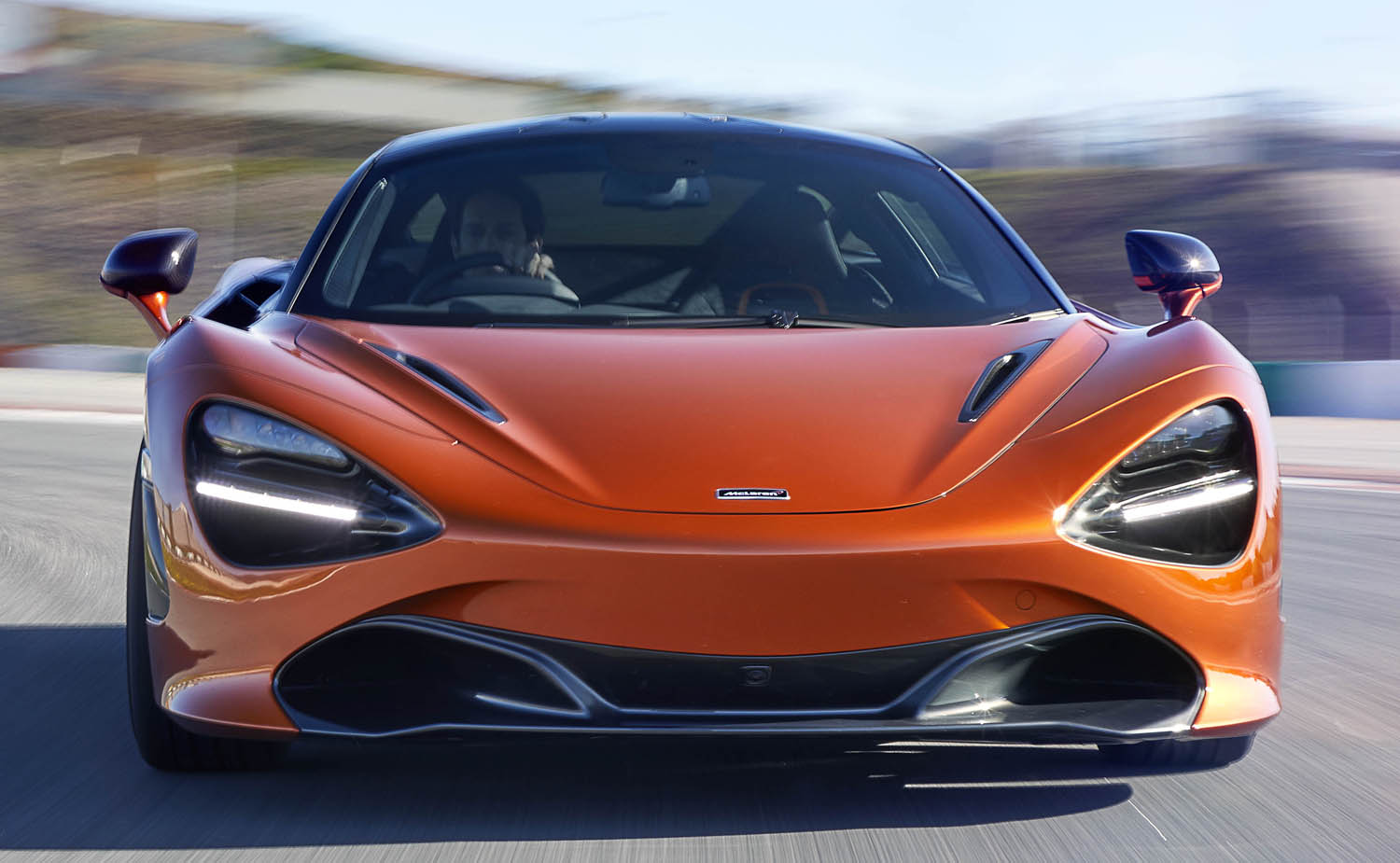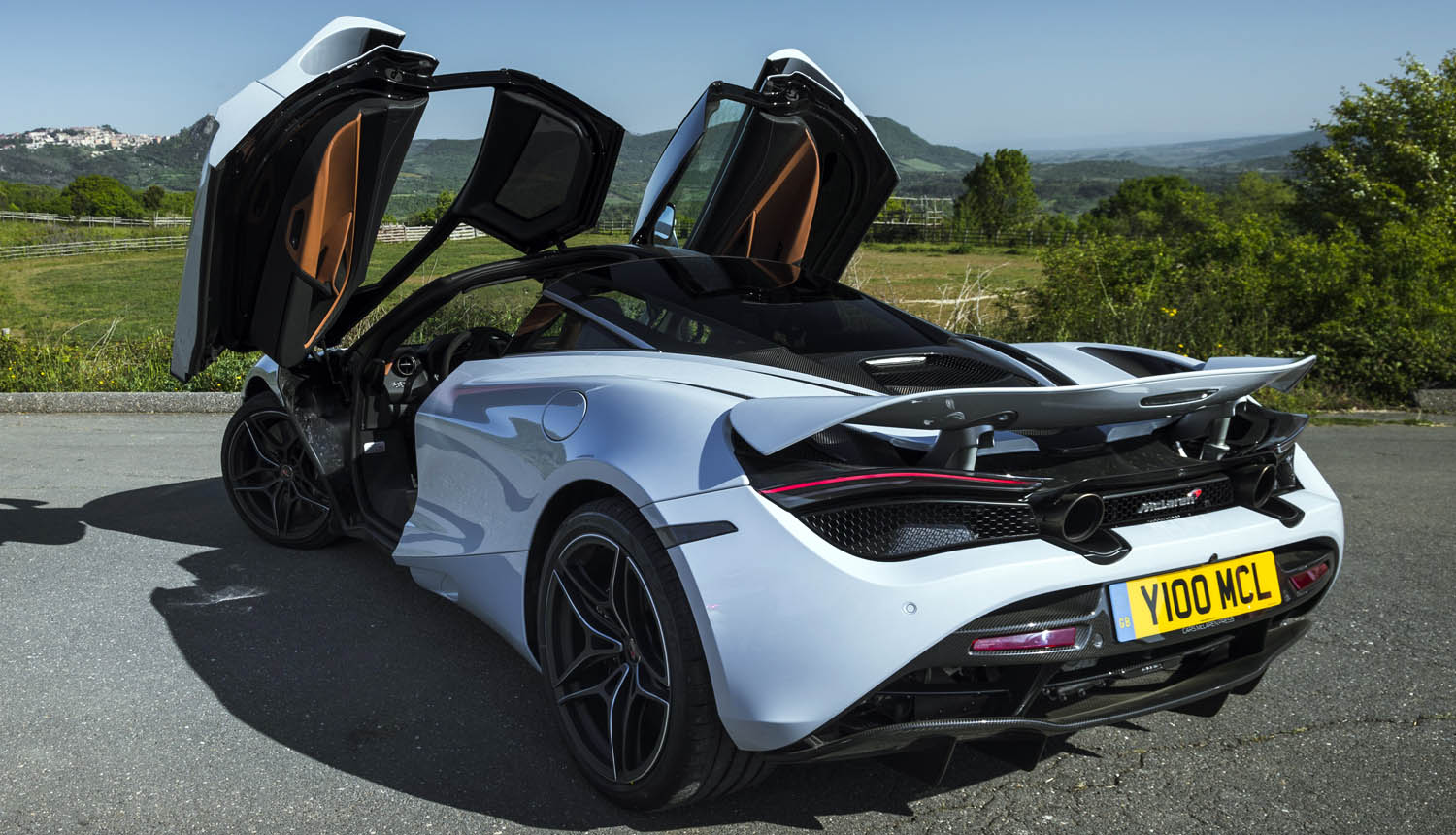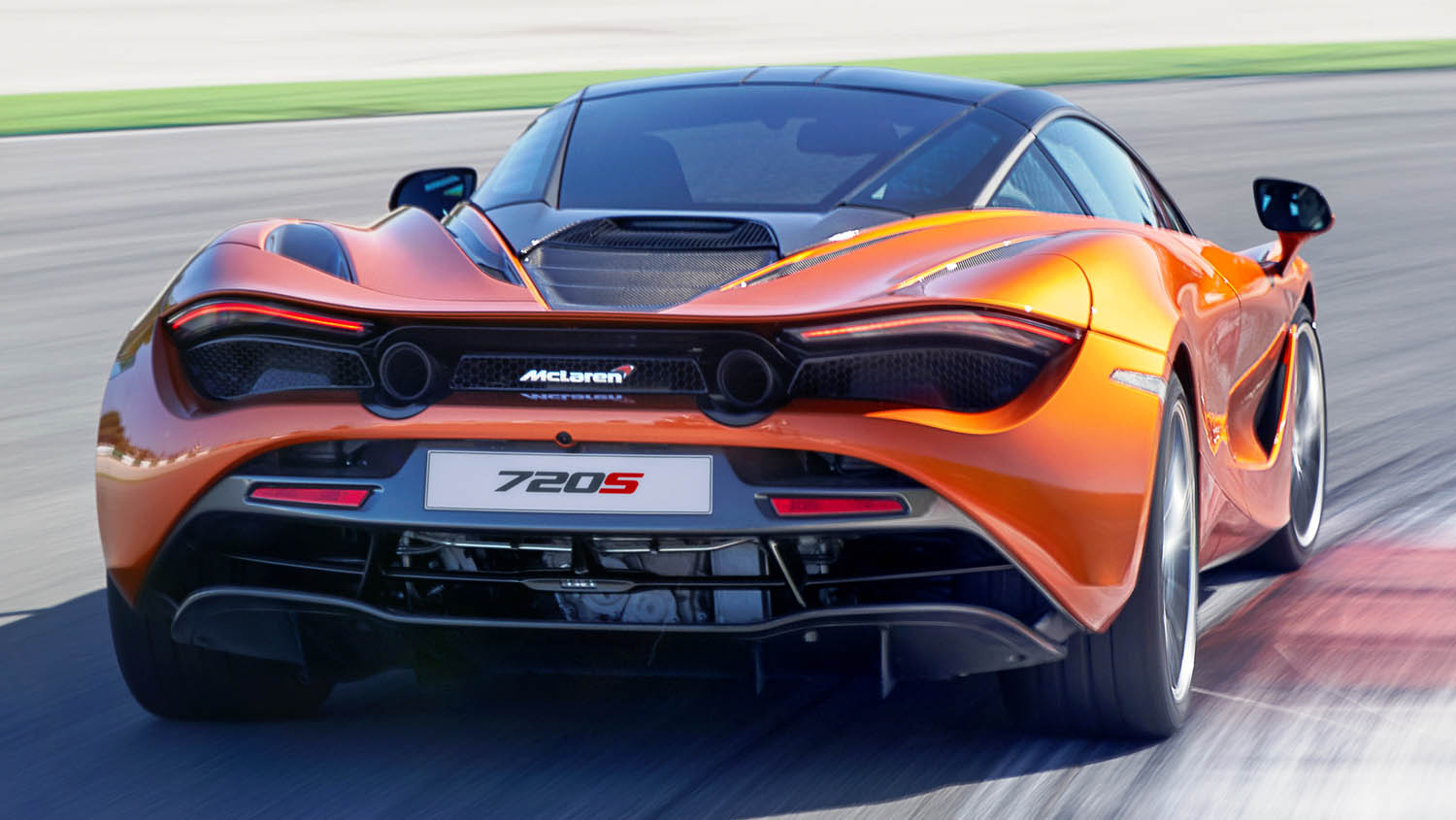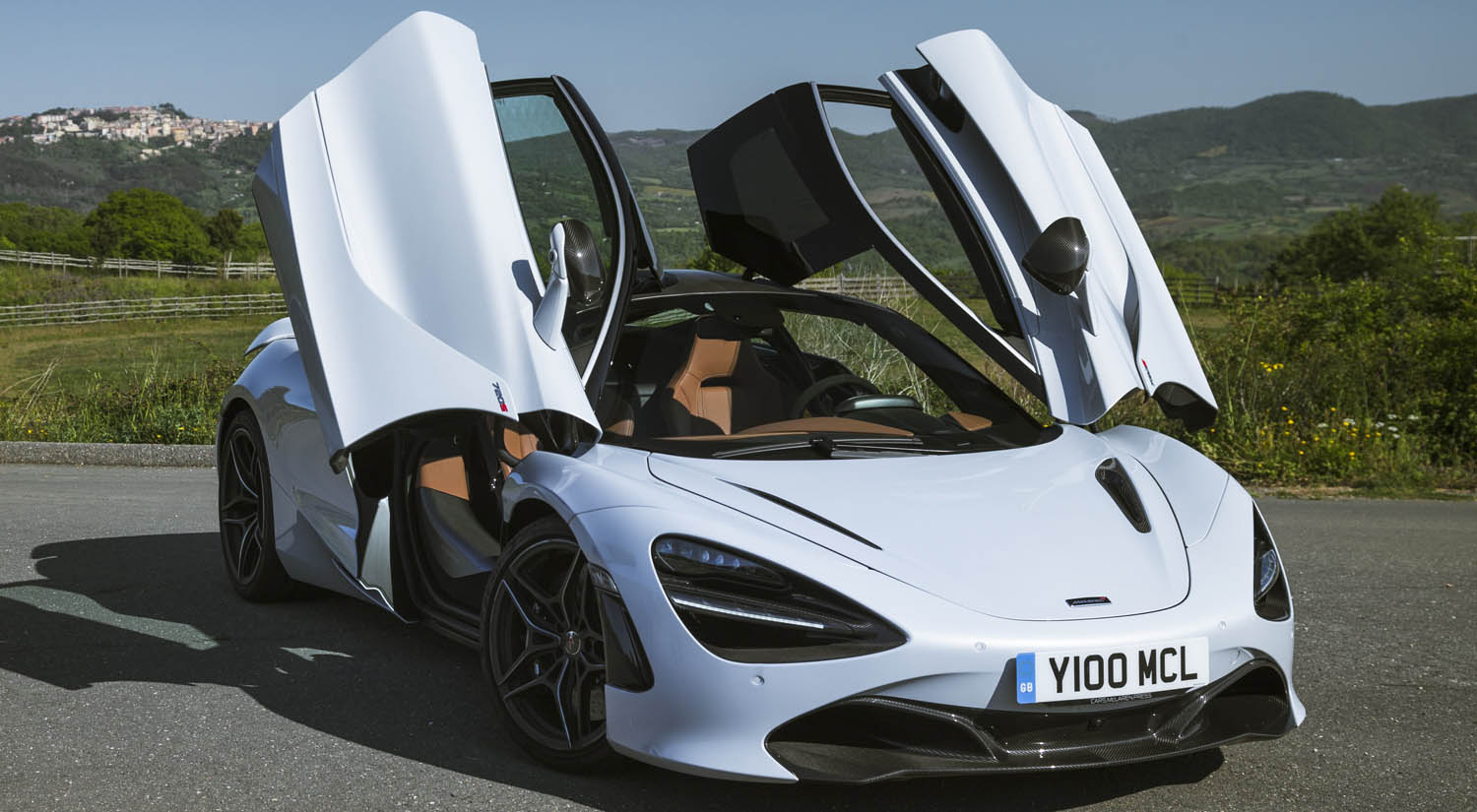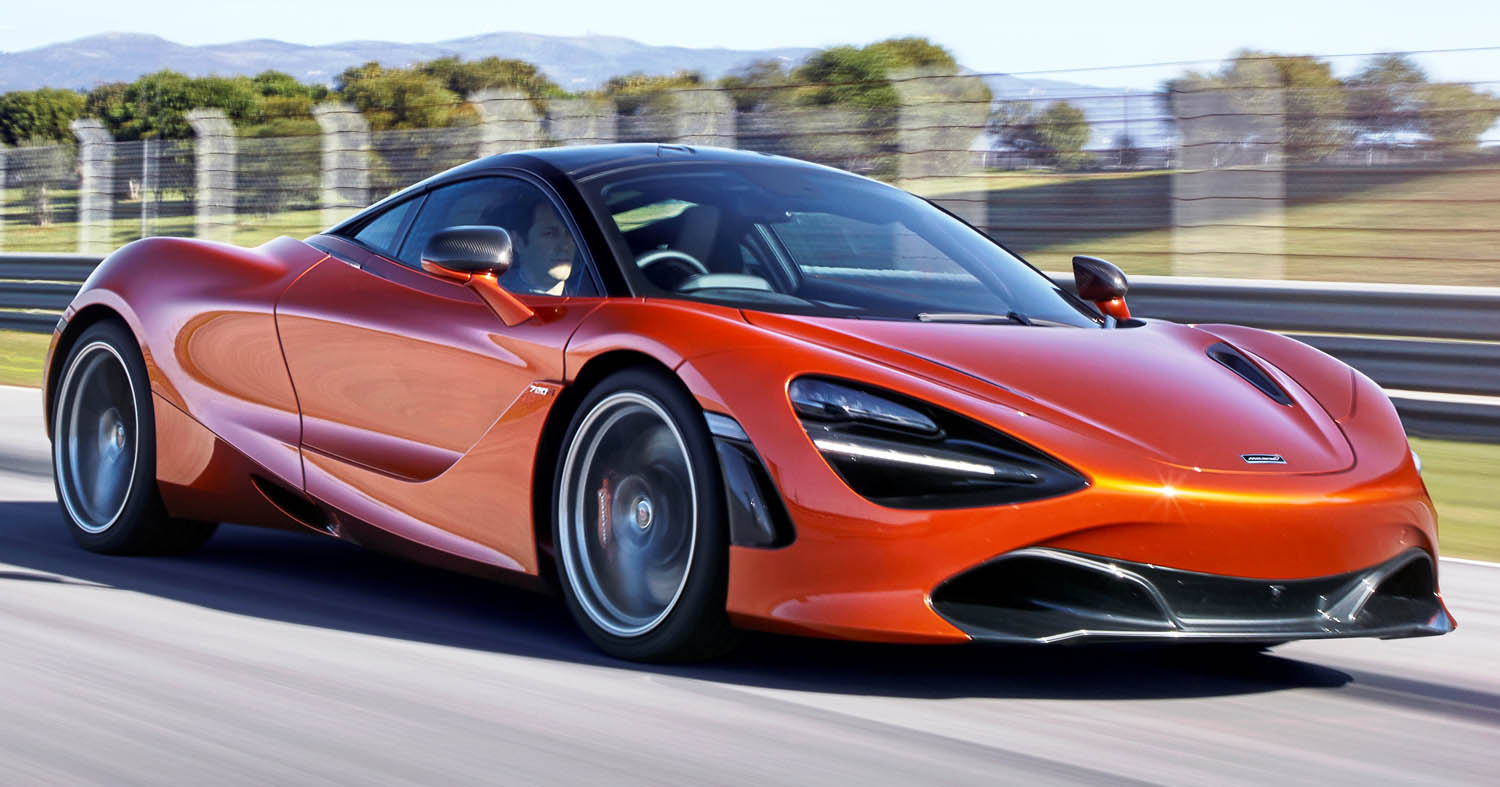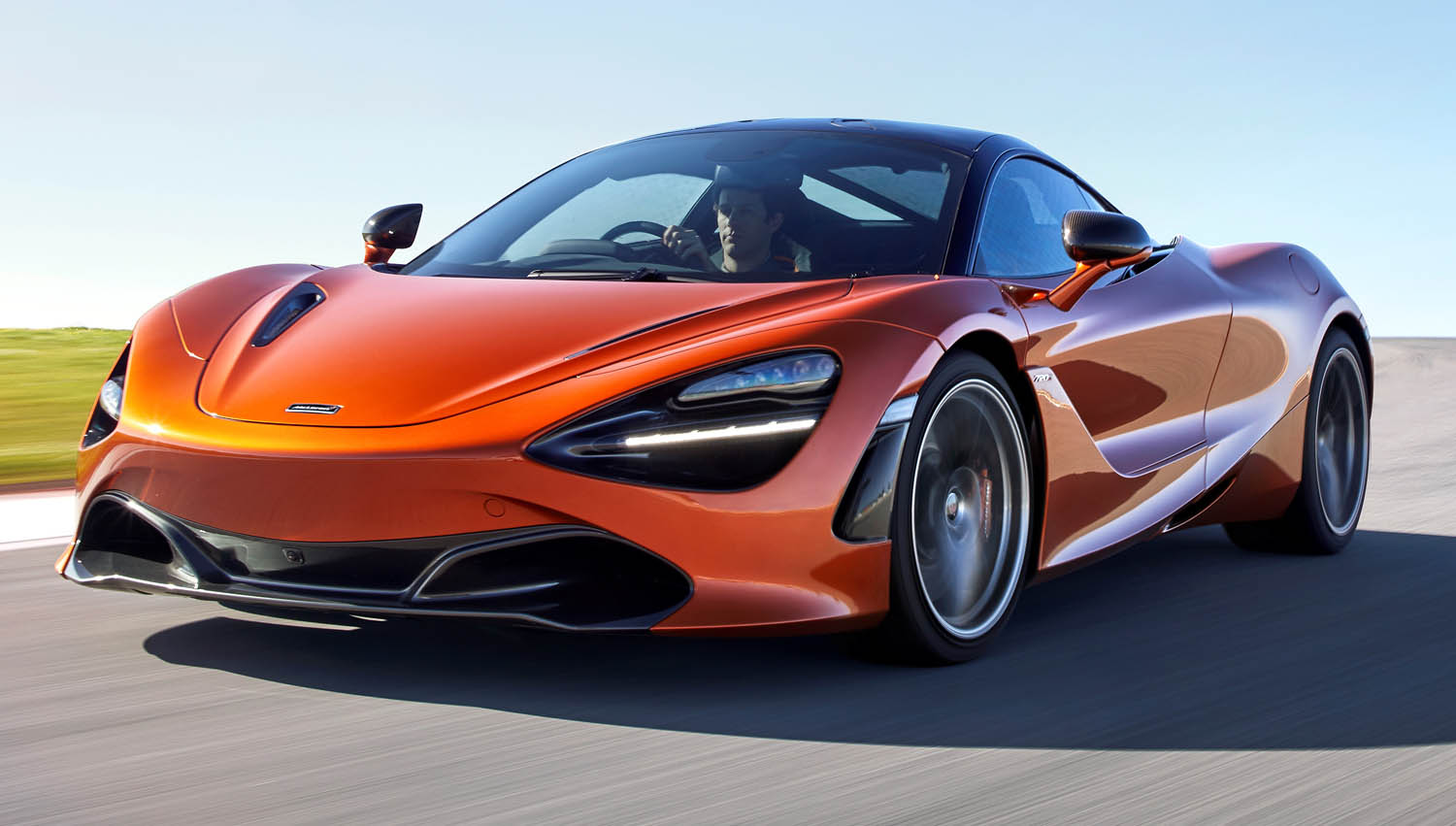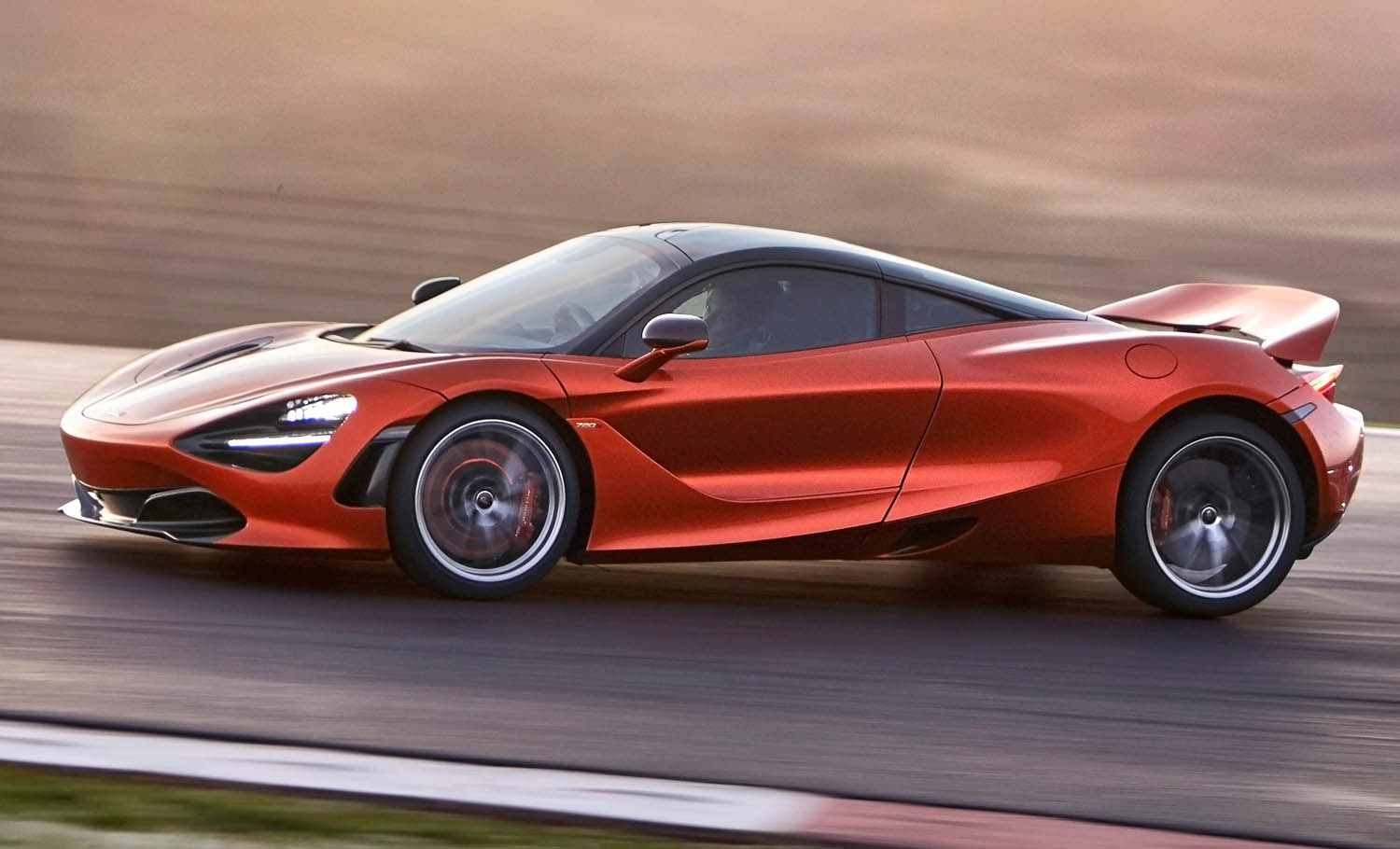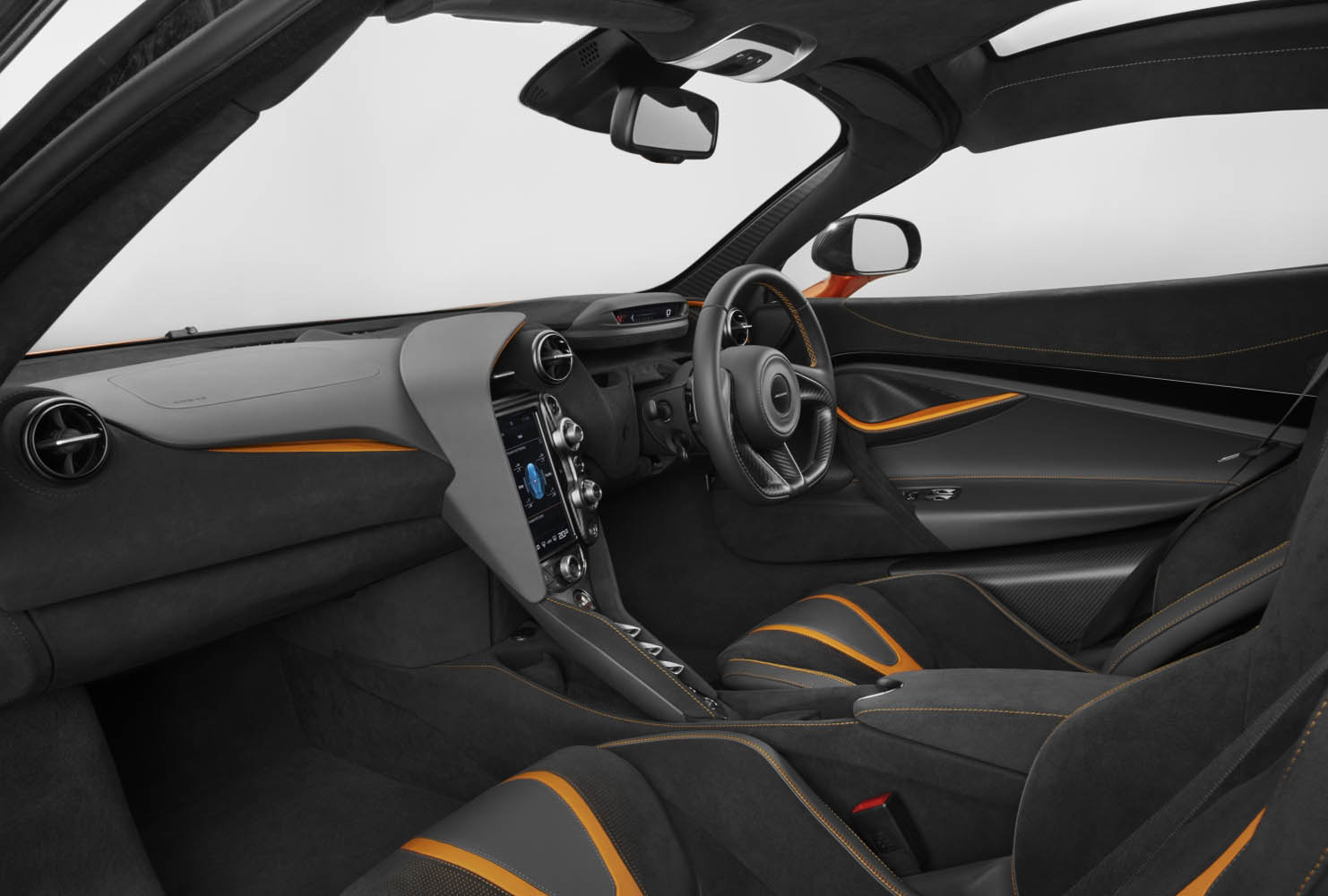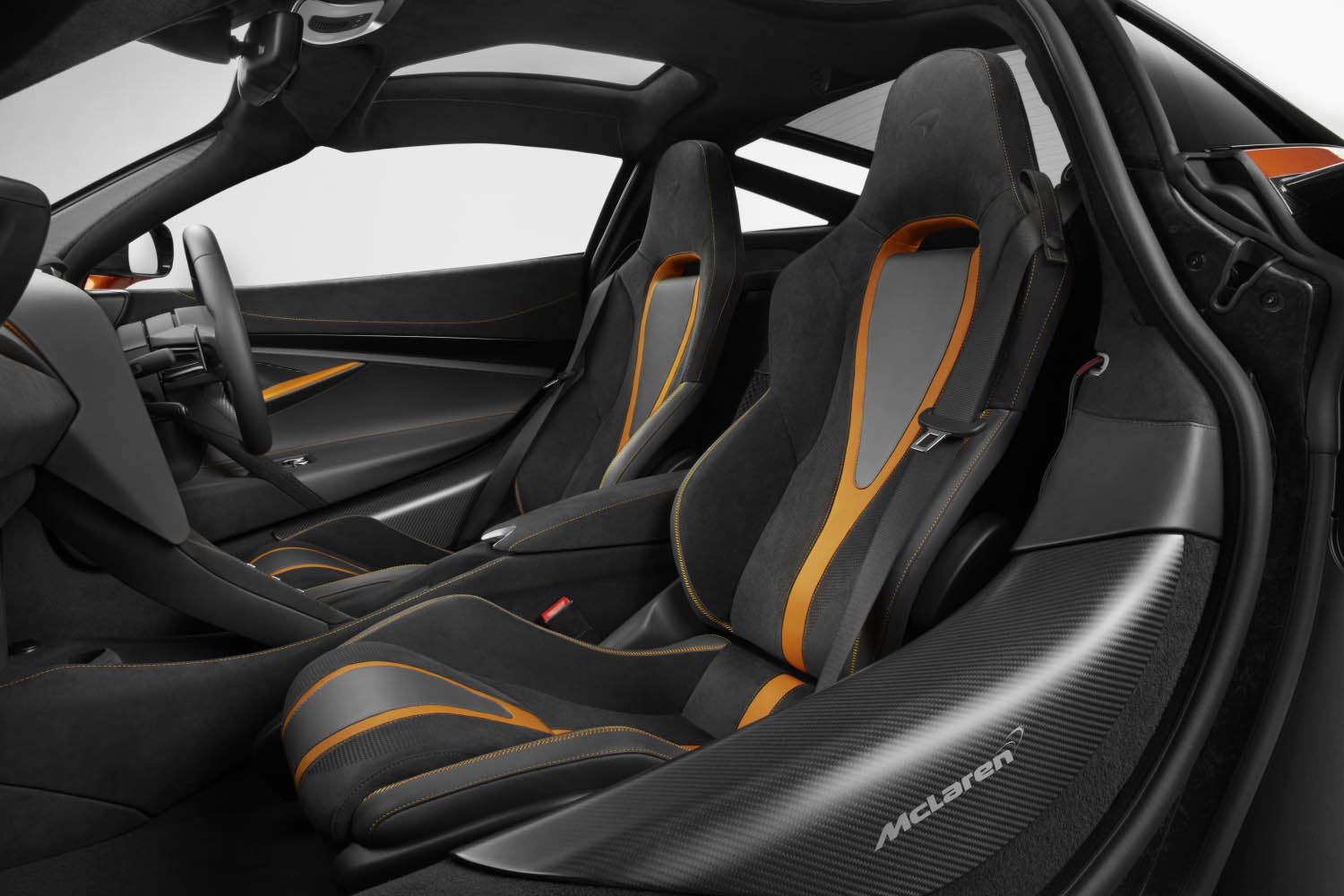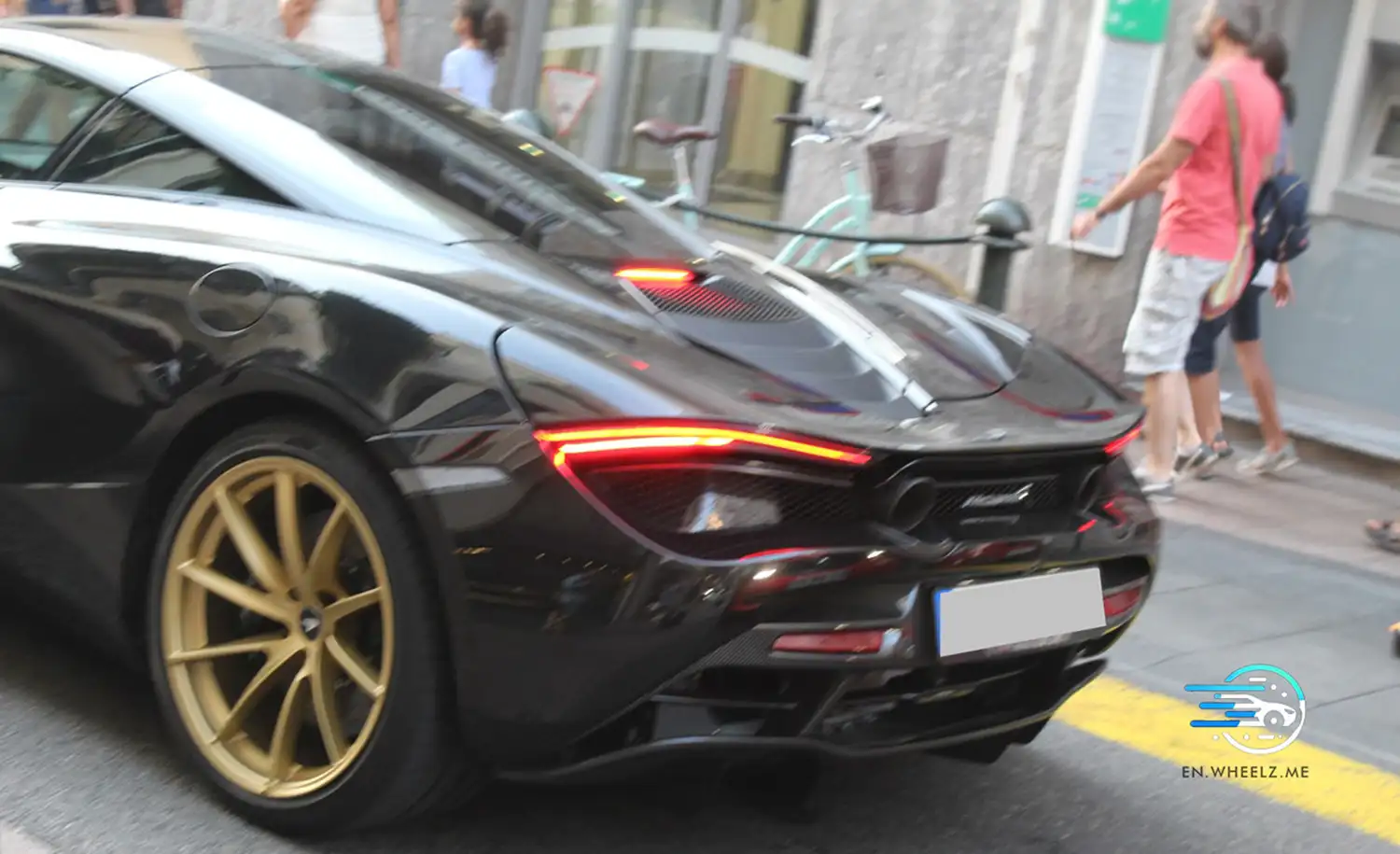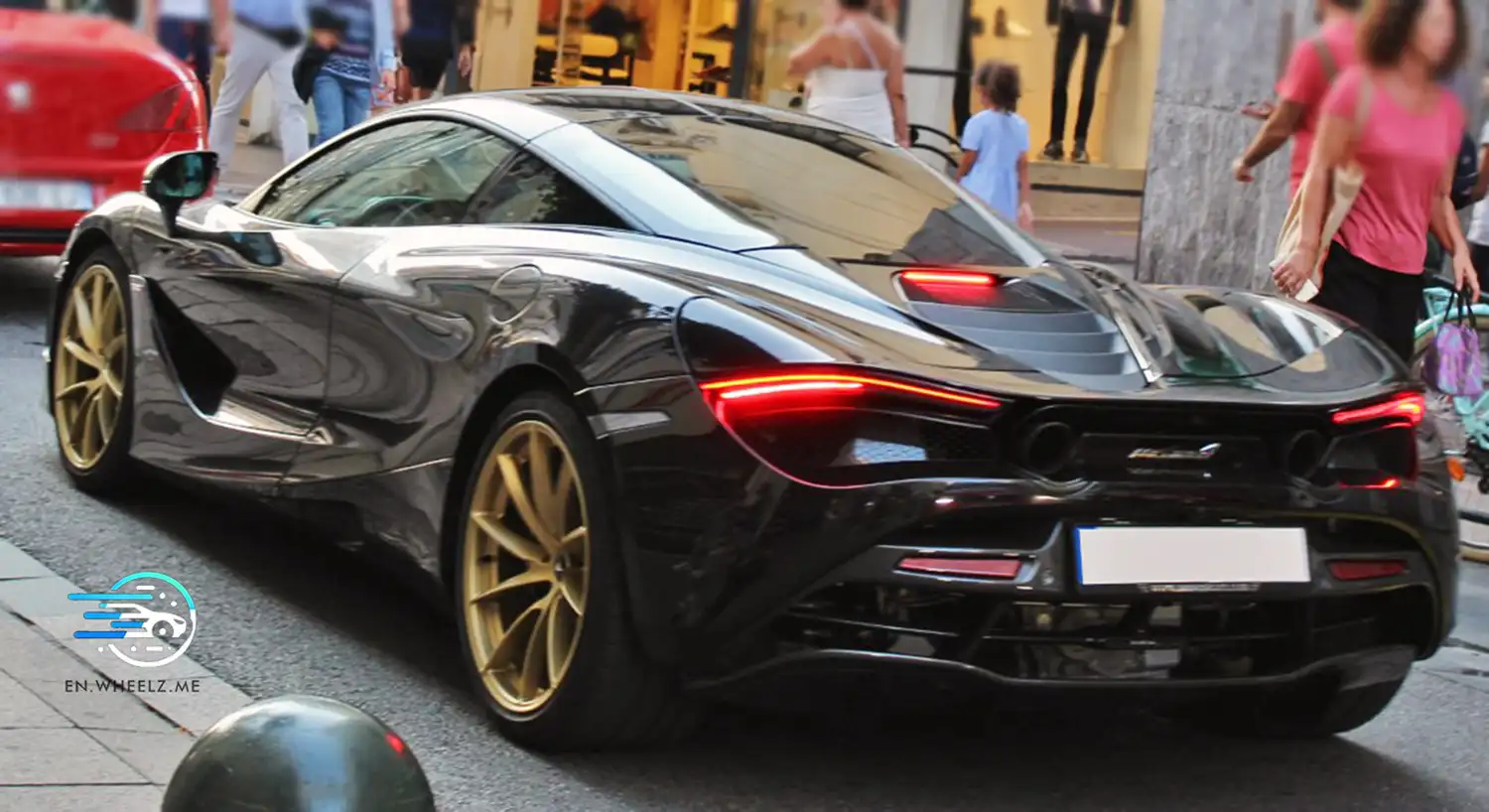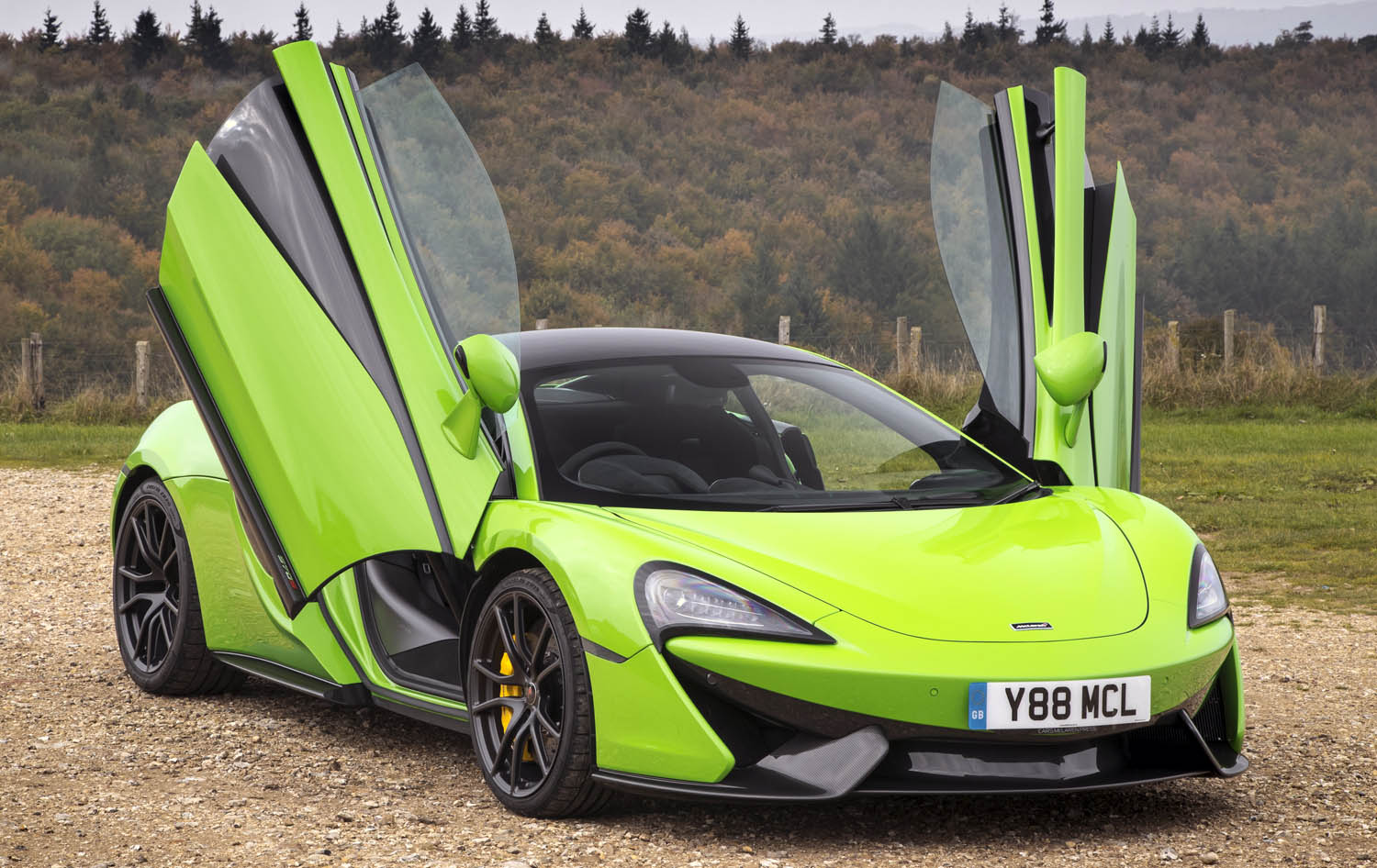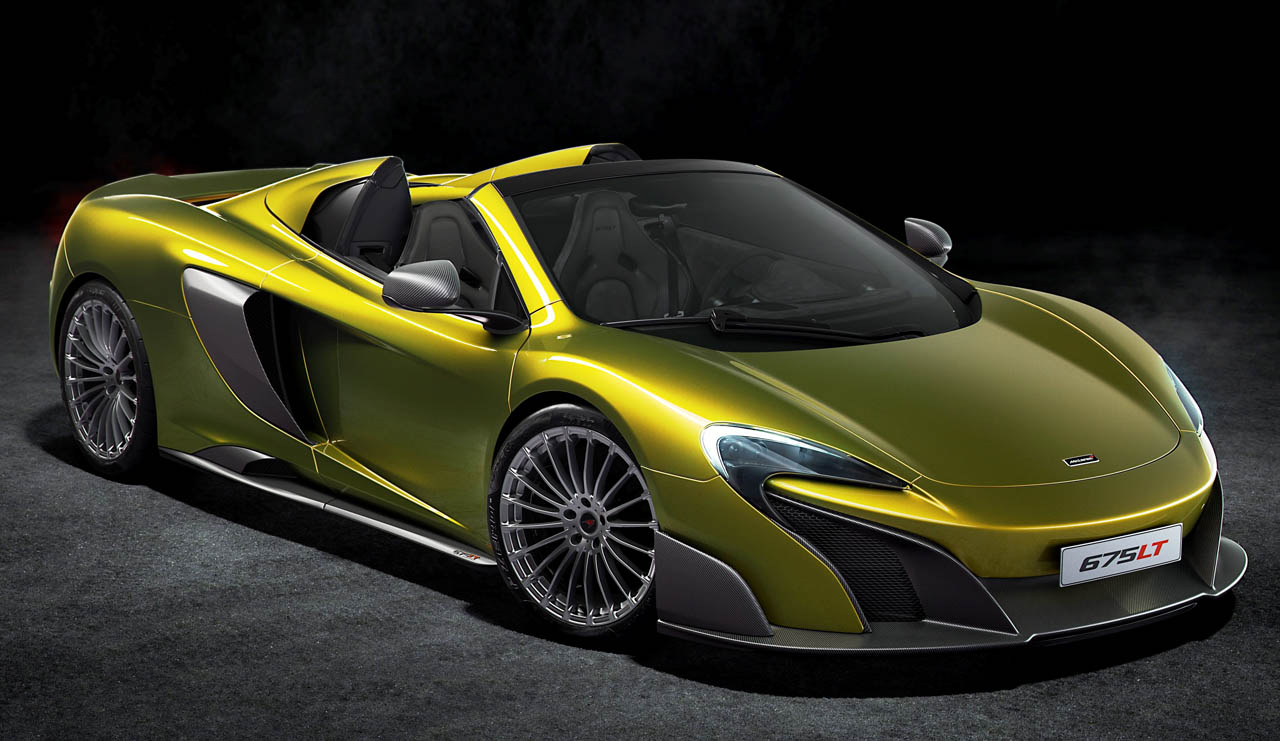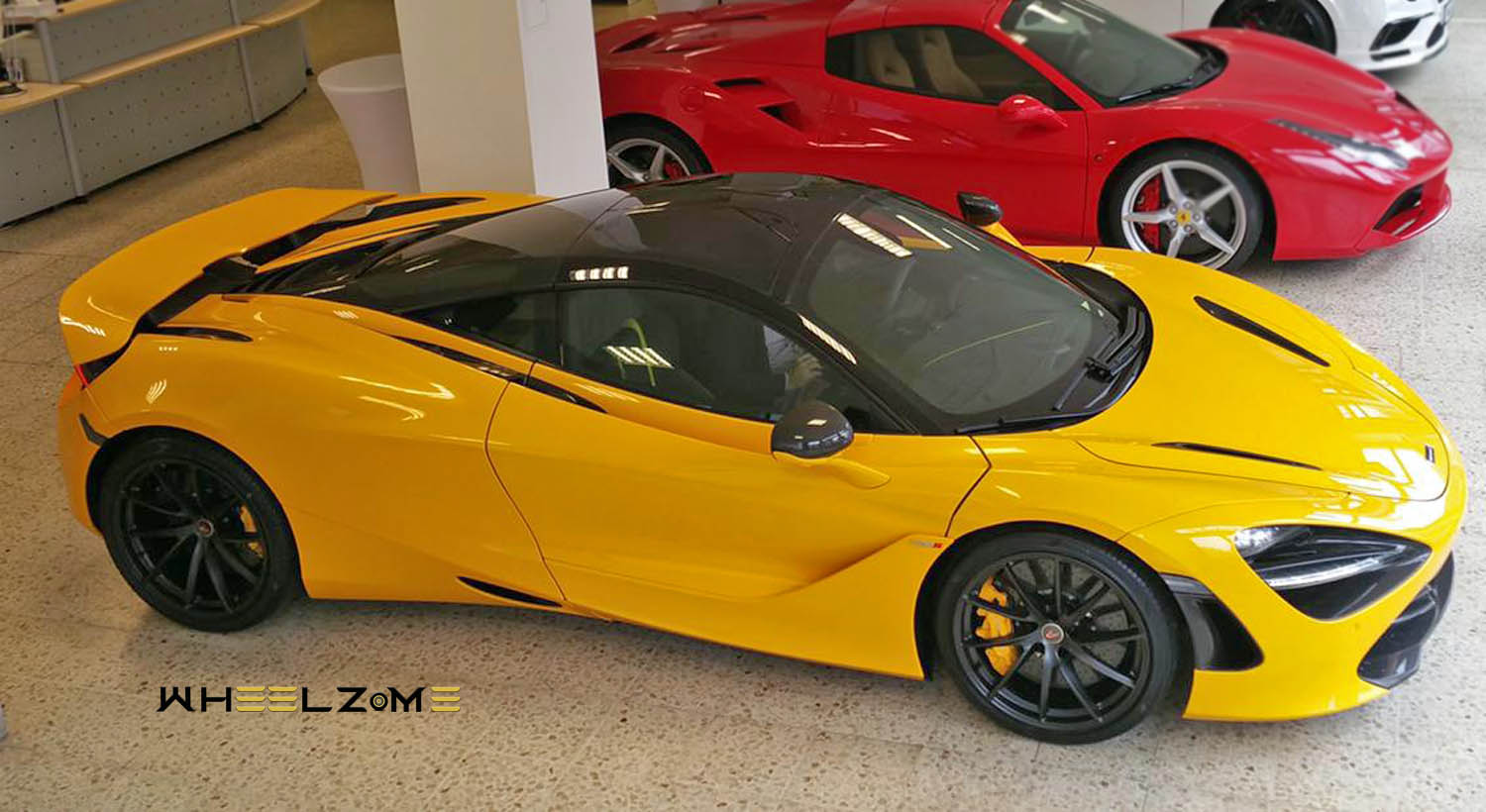
McLaren Automotive, the Surrey, England-based manufacturer of luxury, high-performance sports and supercars, has renewed the Super Series product family at the core of its brand with the introduction of the new McLaren 720S, a car that sets new benchmarks for supercar excellence.
Lighter, faster, and even more dynamically capable than its McLaren 650S predecessor and with unparalleled levels of interior space and sophistication, the new McLaren 720S has a breadth and depth of abilities that involve and satisfy a driver in a way that no competitor can.
One glance at the McLaren 720S identifies it as a bold reinterpretation of McLaren’s design language. Rooted in aerodynamic principles applied to a beautiful form with nothing superfluous about it, the McLaren design ethos has produced some astonishing cars. The new 720S, immediately and undeniably a McLaren, is perhaps the most distinctive and remarkable yet.
One of the key points in the design of the new McLaren 720S is the absence of radiator intakes on the side of the car; this function is carried out by the unique ‘double-skin’ aerodynamic form of the dihedral doors, which channel air to the high-temperature radiators that cool the mid-mounted engine.
The new M480T engine powering the 720S continues the lineage of McLaren’s multiple-award-winning, twin-turbocharged V8 engine series. This new 4.0-litre engine generates a maximum of 720PS and up to 770Nm of torque, delivering truly astonishing levels of performance: standstill to 100km/h (62mph) takes less than 3 seconds and just 5 seconds later the car has passed the 200km/h (124mph) mark. Maximum speed is 341km/h (212mph). Braking is equally impressive, the new McLaren 720S coming to a halt from 200km/h (124mph) in just 4.6 seconds, covering 117m. And the efficiency goes beyond velocity -the new McLaren 720S delivers 10.7 litres/100km in the official combined fuel economy cycle and CO2 emissions of 249g/km in the New European Driving Cycle (NEDC).
McLaren’s expertise in carbon fibre structures – every road car built by the British manufacturer since the McLaren F1 in 1993 has had a carbon fibre chassis – underpins the construction of the new 720S; the architecture of the car is based around a new carbon fibre ‘tub’ and upper structure, the McLaren Monocage II. This technology delivers extreme strength and rigidity in a lightweight structure – the ideal base for any supercar. A range of aluminium alloys are also used extensively in the chassis, as well as for some body panels.
Owners of the new McLaren 720S will benefit from the most involving driver experience ever from a McLaren Super Series car – an incredibly impressive benchmark in its own right – calling on huge reserves of grip, balance, and performance to enjoy the car to its full potential. Double the aerodynamic efficiency of the 650S and a new generation of McLaren’s Proactive Chassis Control combine with new suspension and the established excellence of McLaren’s power-assisted, electro-hydraulic steering to deliver a driving experience that is unmatched in terms of sheer breadth of dynamic capability.
And all of this while completely at ease in a cabin environment that establishes new standards in the supercar segment for visibility, space and comfort. Together with a full complement of advanced convenience technologies, these attributes give the new McLaren 720S an incredible degree of usability and validate its claim to be the most complete supercar on sale today.
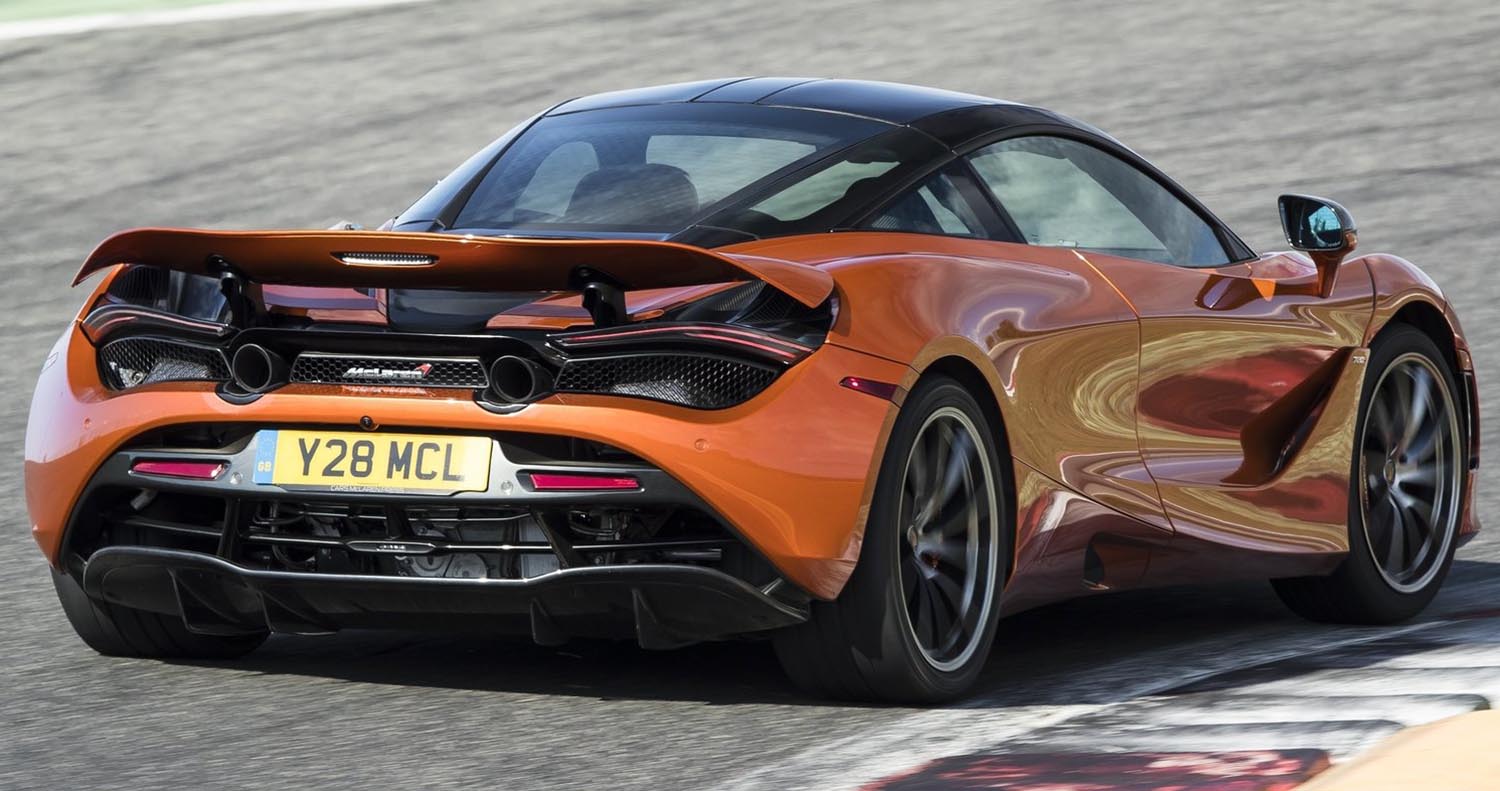
Beauty and technology in harmony
The new McLaren 720S represents a dramatic step-change in McLaren Super Series’ design language. Poised, compact, proportions are defined by the elegant sweep of the teardrop glasshouse, while the layered, ‘shrink-wrapped’ bodywork creates a futuristic, highly technical appearance.
Radical innovation defines the design of the new McLaren 720S. The lean, sculpted body shape creates an instantly recognisable silhouette. Lightweight aluminium and composite bodywork wrap tautly around the contours of the carbon fibre Monocage II structure for a form with dramatic intent and striking beauty in equal measure.
McLaren engineers have capitalised on the inherent structural integrity of the carbon fibre Monocage II structure to deliver unusually slim windscreen pillars and glazed C-pillars that taper from the roof in a distinctive teardrop motif. The canopy-like design also provides a feeling of 360-degree vision for occupants that is unrivalled in the supercar class, allowing light to flood into the cabin and setting a new benchmark for visibility.
The aggressively contoured front bumper takes its inspiration from the McLaren P1TM. Visually dramatic, digital LED headlights are integrated within ‘eye-sockets’ that feature an aero duct to channel air to the low-temperature radiators and cut deep into the front fenders to produce a distinctly predatory gaze. The unit is divided into two portions by sequential indicators that sweep across a thin LED light strip, with LED headlights positioned above and the aero-duct below.
The new McLaren 720S is equipped with Static Adaptive Headlights, a pioneering technology that optimises headlight performance by changing the directional light intensity based on steering input. Of the 17 LEDs in each headlight, five provide the base, static beam pattern and the remaining 12 light according to the direction the front of the car is moving in, giving the effect of the beam ‘bending’ and better illuminating that area of road.
Operating from standstill to maximum speed, the McLaren Static Adaptive Headlight technology gives a driver better visibility through corners, increasing comfort and safety. Other road users also benefit from being seen earlier and in greater clarity than would otherwise be the case. The Static Adaptive Headlight system also improves straight-ahead long range visibility by raising the beam pattern by half a degree – whether on dipped-or main beam – when the new 720S reaches 110km/h (68mph), increasing ‘forward punch’ and focusing a driver’s attention further on the road ahead.
Double-skinned dihedral doors allow for the apparent removal of side air intakes from the toned, pinched waistline, despite the increased cooling requirements of the new 4.0-litre twin-turbocharged V8 engine. Fast moving air is efficiently managed around the sleek A-pillars into ducts within the door, maximising cooling performance without the need to increase radiator dimensions or mass.
With the mirrors being positioned on the outer section of the doors for optimal rear visibility, cool, clean air can flow uninterrupted from the windscreen pillars into a deep channel in the door upper. From here it flows into gills positioned either side of the mid-mounted V8 engine and into the high-temperature radiators. On the outer, lower, part of the door, an opening behind the distinctive side blade removes turbulent air from the front wheel arches, creating extra downforce and benefitting overall aerodynamic efficiency.
Despite the apparent removal of side air intakes, cooling performance improves by 15% in comparison to the 650S. This advance is crucial in meeting the cooling requirements of the new 4.0-litre twin-turbocharged engine and is the result of McLaren engineers pursuing every possible route to improve cooling: the lower cooling vents on the side of the car behind the doors, for example, are the product of learnings gained from ensuring maximum radiator efficiency in the McLaren 675LT.
The top of the V8 engine in the new McLaren 720S is 120 mm lower than in the first generation of McLaren Super Series models, with the reduction in plenum enabling improved rear visibility and luggage storage space. The rear of the new 720S is 145mm lower overall than a 650S, the drag-reducing, aggressive tapering of the teardrop canopy towards the rear wing enabled by lowered radiator header tank, rearward repositioning of structural airboxes and the introduction of a double CHMSL (central high-mounted stop light).
Flowing over and into the rear fenders, the full-width wing with airbrake functionality has an optimised motion to improve the downforce efficiency and is automatically activated to either decrease drag or increase downforce, or act as an airbrake to enhance vehicle balance under heavy braking. Aerodynamic efficiency – the ratio between downforce and drag – is more than double that of the McLaren 650S and the overall result is a car that is superbly balanced and gives a driver confidence to push harder through the fastest corners found on a racetrack.
The full-width, aerofoil-profile rear wing of the new McLaren 720S delivers up to 30% more downforce than the wing of a 650S Coupé, and works in harmony with a rear diffuser that sweeps up aggressively from the flat bottom of the 720S with thinner, sharper diffuser ‘fences’ to further optimise downforce. The engine air intakes on the top of the fender are close to the rear wing and when the wing deploys the resulting aerodynamic downwash further benefits engine performance. The wing, which is hydraulically operated, also has airbrake functionality, giving it three main operational positions:
- Driver downforce (from 70% to 80% wing deployment, depending on speed), is engaged when the Aero button is pushed and delivers the necessary downforce and balance to guarantee optimal performance during cornering
- DRS (30% wing deployment) delivers drag reduction when accelerating in a straight line and up to maximum speed
- High Speed Braking (100% airbrake deployment in less than 0.5sec), The wing, fully deployed, shifts the aero-balance by 20% to improve high speed braking stability and overall braking distances
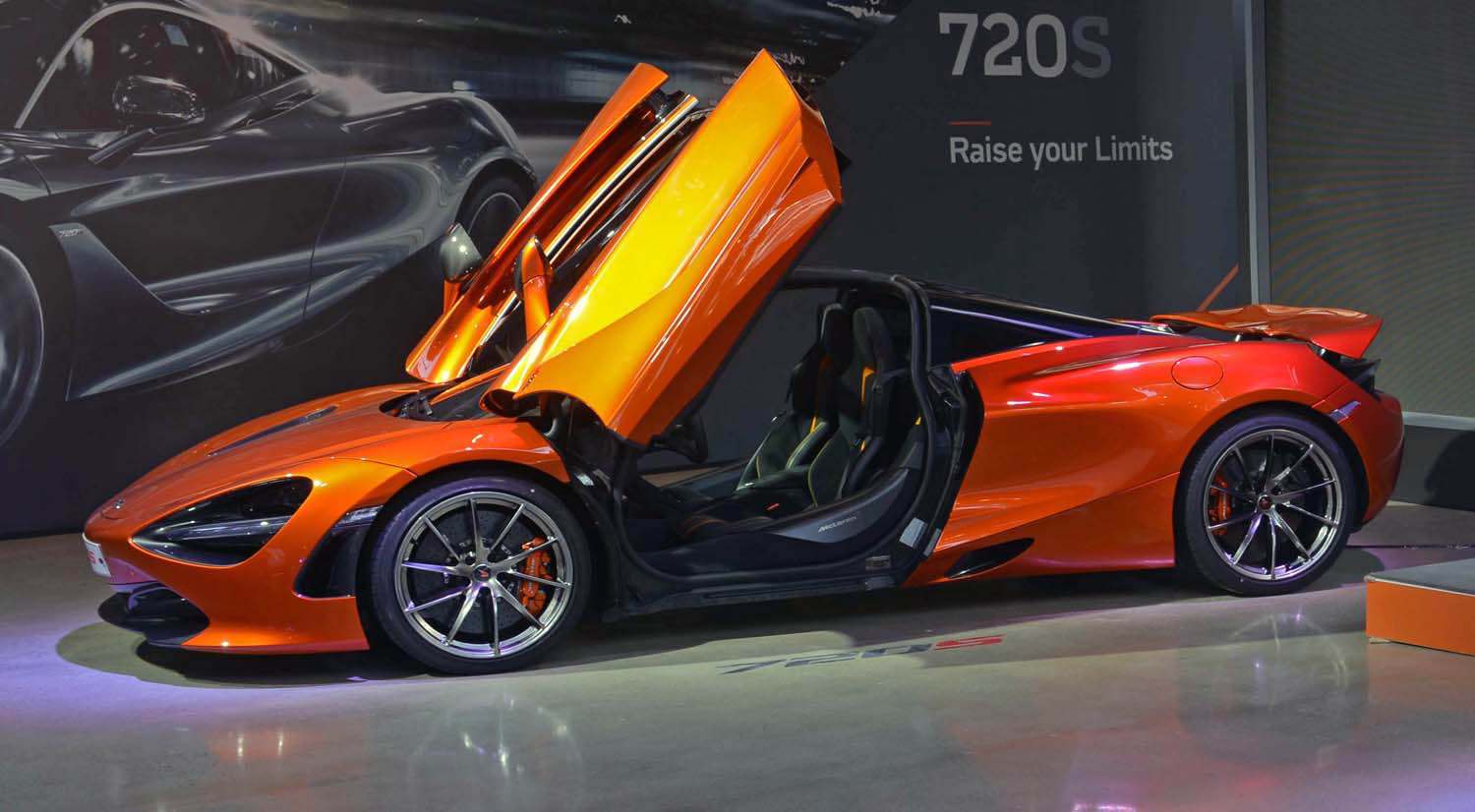
Advanced carbon fibre body architecture
A carbon fibre structure, Monocage II, is at the core of the 720S. This lightweight architecture capitalises on McLaren’s expertise in carbon fibre construction, which dates back to the ground-breaking MP4/1 Formula One car of 1981 and includes every road and race car produced since.
Using structural technology pioneered in the McLaren P1TM, Monocage II provides an inherently strong, stiff, and safe passenger cell. In contrast to the MonoCell construction of the first-generation Super Series models, where the integrated structure stopped below the glasshouse, Monocage II incorporates the roof.
Finished in a satin lacquer, the state-of-the-art architecture is showcased as soon as the driver lifts the dihedral door. The windscreen pillars can also be specified with the carbon fibre weave of the Monocage II structure visible if an owner prefers, in conjunction with other areas of the structure.
Carbon fibre provides a remarkably stiff and rigid structure and the huge strength of the Monocage II carbon fibre upper structure has allowed McLaren designers to specify strikingly slim roof pillars. This delivers excellent visibility through the deep, broad windscreen and, together with B-pillars that are positioned rearwards on the cab-forward cockpit, contributes to a sensation of exceptional space. This is further enhanced by transparent, glazed C-pillars and a large rear screen, which also help to deliver over-the-shoulder visibility that is peerless among supercar rivals.
The inherent strength of carbon fibre also ensures exceptional occupant safety in the event of a crash. Depending on the severity of the impact, the carbon fibre passenger cell is typically undamaged. Powertrain and suspension components are mounted on lightweight aluminium subframes that absorb crash energy and improve repairability and cost.
The Monocage II is one of the reasons why the new McLaren 720S has a lightest dry weight of just 1283kg (compared to 1301kg for a comparable 650S Coupé), but it is not the only area where McLaren engineers have pared down weight; the electrical system is 3kg lighter than that of the first-generation Super Series, the braking system saves 2kg and the structural airboxes 1.5kg. The new suspension also delivers a significant weight-saving, being 16kg less than the system on the McLaren 650S.
No rival weighs so little, and none can compete with the McLaren 720S’s outstanding power-to-weight ratio of 561PS-per-tonne in lightest dry weight form. Removing significant mass from the highest section of the vehicle also lowers the centre of gravity by 3 per cent compared to the 650S, contributing to the benchmark handling excellence of the new McLaren 720S.
McLaren’s determination to make the new Super Series as easy to live with as it is dynamically thrilling was at the heart of the development programme throughout. The sills of the 720S drop down dramatically where the occupants’ feet swing in and out of the luxurious cabin. The exquisite dihedral doors hinge dramatically forwards and upwards as they open, taking a portion of roof in the process. Together, these features ensure a generously wide aperture for occupants entering or leaving the cabin and the door action also facilitates easy access to the luggage area behind the seats.
The doors feature an 80-degree angle of opening and require 155mm less space per side than is needed to fully open the doors of a McLaren 650S. This increases accessibility when parked in tight spaces, especially in close proximity to a wall, and the doors also open to only 1,953mm high, an important factor in underground parking spaces.
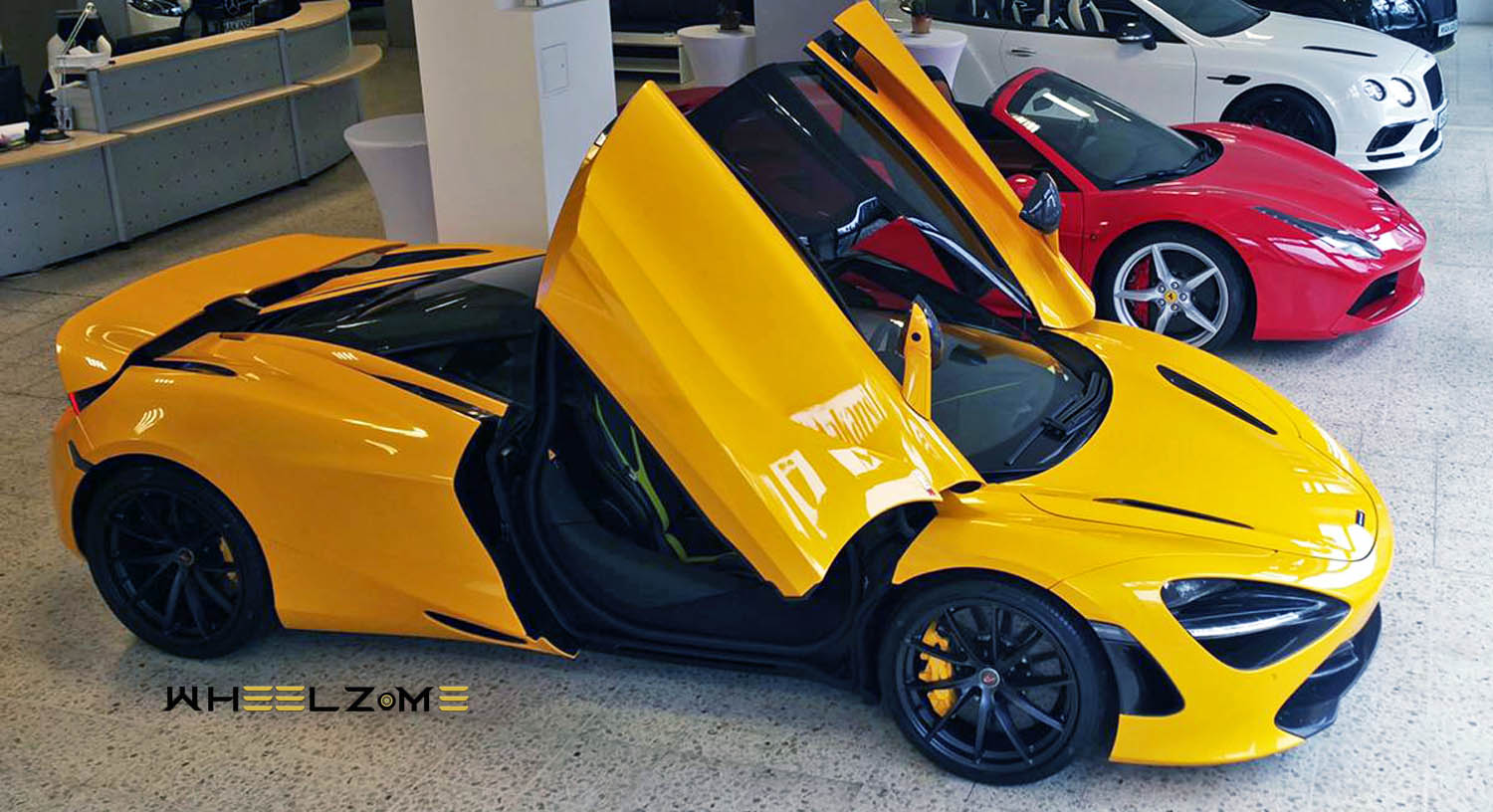
Exceptional new 720PS 4.0 V8 engine
An incredibly potent and highly efficient new 4.0-litre twin-turbocharged V8 engine powers the McLaren 720S. Codenamed M840T and mid-mounted for exceptionally pure handling, the McLaren-designed, twin-turbocharged engine produces 720PS and 770Nm – huge gains of 70PS and 92Nm respectively over the 3.8-litre engine in the predecessor 650S Super Series cars, achieved with a capacity increase of only 195cc.
With the significantly greater power and torque – and further aided by the decrease in vehicle weight -the new 4.0-litre engine gives the McLaren 720S a thrilling power-to-weight ratio of 561PS-per-tonne in its lightest dry weight form. This comfortably exceeds the still-impressive 485PS-per-tonne output of the 650S and gives the new 720S best-in-segment power-to-weight performance.
Crushing acceleration of 0-60mph in just 2.8 seconds, 0-100km/h (0-62mph) in 2.9 seconds and 0-200km/h (0-124mph) in 7.8 seconds puts the new McLaren 720S in pole position in the supercar performance league. On the way to a maximum speed of 341km/h (212mph), the standing quarter mile sprint is dispatched in 10.3 seconds. Despite the dramatic gains in accelerative performance, fuel efficiency and CO2 emissions have also improved in comparison to the McLaren 650S, respectively by 1.0 litre/100km in the combined cycle and 26g/km under the NEDC.
The new M840T has a 41% component-change compared with the 3.8-litre M838T V8 engine, which continues in McLaren Sports Series models. All major components were assessed for potential enhancement and a significant number have been substantially upgraded. New, lighter pistons and connecting rods, and a stiffer, lighter crankshaft contribute to enhanced responsiveness from an engine with bore unchanged and piston-stroke increased by 3.6mm.
The turbochargers and intercoolers are completely new. Specified with lightweight turbines capable of 160,000rpm, the ultra-low inertia, twin-scroll turbochargers are evidence of the determination of McLaren engineers to increase responsiveness as well as outright power. The wastegates and dump valve are electronically controlled to actively manage the build-up of power and torque from low rpm, contributing to improved engine efficiency and emissions control. New Port Fuel Injection doubles the number of injectors from eight to 16, the twin-injector solution improving fuel nebulisation and delivering improved combustion and lower emissions.
A new cast aluminium plenum bearing the McLaren Speedmark logo is visible through a mesh cover and is illuminated on vehicle unlocking, celebrating the pursuit of unrivalled driver engagement and enjoyment that was a key focus throughout the development of the new McLaren 720S. Throttle response – both on- and off the throttle – has been calibrated to deliver the optimum blend of immediate reaction and progressive control, ‘hardwiring’ the driver to the powertrain and ensuring absolute connectivity and involvement. Under full acceleration, power delivery continues to build relentlessly throughout the rev range, encouraging the driver to hold each gear all the way through to a thrilling 8,100rpm in first and second gear and 8,200rpm in the next four gears.
The characterful soundtrack from twin exhaust outlets has been engineered to deliver similarly intoxicating engagement, with a soulful, clean and crisp exhaust note achieved through a sophisticated balance of harmonics and delivering a crescendo characteristic according to engine rpm and load. A sports exhaust with a unique tailpipe design and an even louder and more emotive soundtrack is available as an option.
A dual-clutch, seamless-shift gearbox with paddleshift controls delivers power to the rear wheels, and can either shift between the seven gear ratios automatically or defer to the driver having full manual control. Transmission software developed in-house by McLaren maximises the gearbox’s performance strategy, with quicker shifts enabled by ignition-cut and downshift speed further enhanced by the lower inertia of the new engine. A launch-control function delivers 2.8-second 0-60mph runs, reflecting the overall experience of sharper, faster gear changes quicker than achieved by a McLaren 675LT and creating a deep sense of mechanical connection between car and driver.
The character of the powertrain can be further tailored, with a choice of Comfort, Sport, or Track modes linked to the dynamic behaviour of the vehicle. This enables powertrain and chassis performance to be perfectly matched, delivering on demand ferociously quick gear changes or more relaxed shifts to match a gentler driving style
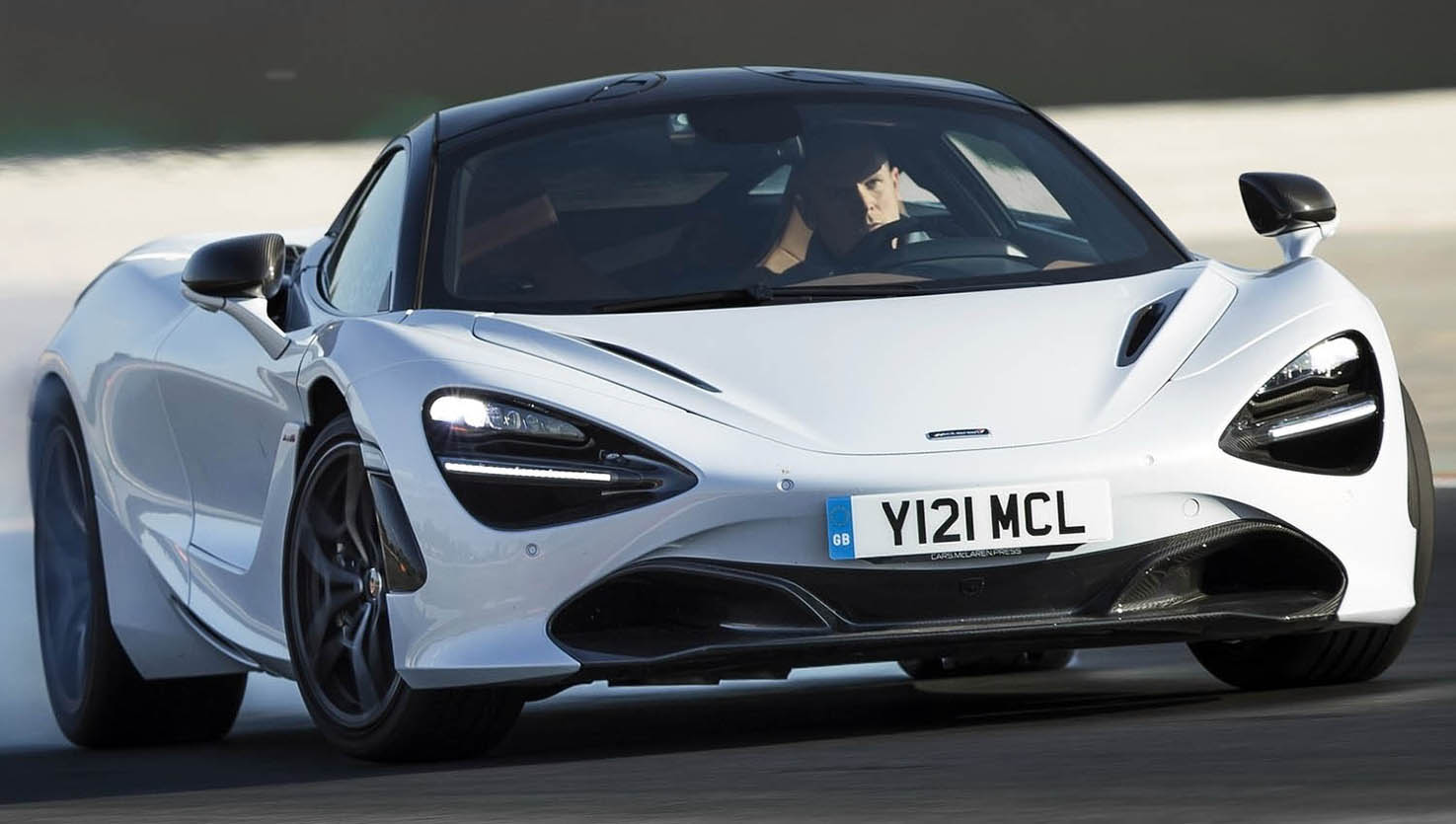
Unparalleled breadth of dynamic capability
The inherent rigidity and lightweight construction of the new McLaren 720S gave McLaren’s engineers the perfect platform – quite literally – to produce a car with the widest breadth of ability of any McLaren that establishes new dynamic benchmarks in the supercar segment.
Suspension compliancy is unrivalled, with comfort superior even to the first-generation Super Series, yet with the agility and control to compete with the most track-focused of McLarens. Suspension uprights and the double wishbones have been re-engineered to reduce unsprung mass by 16kg, for exceptionally responsive handling and increased performance. Revised suspension geometry optimises driver feedback and maximises grip, with the front suspension enhancing steering feel and the rear suspension benefitting braking stability by improving toe compliance on the rear axle.
McLaren Proactive Chassis Control II makes its debut on the McLaren 720S. Familiar from the first Super Series models, this is a new generation of McLaren’s active chassis system that features hydraulically-interlinked dampers at each corner and removes the need for anti-roll bars.
The big advance made with PCCII comes in the control strategy, which is radically new. Based on Optimal Control Theory, the chassis software has its basis in advanced mathematical research initiated by McLaren at the University of Cambridge. Advanced algorithms assess inputs from crucial vehicle parameters, with data from 12 additional sensors – including one accelerometer at each corner of the vehicle to measure wheel acceleration and two pressure sensors per damper – analysed and reacted to in two milliseconds.
Drivers can choose from Comfort, Sport, or Track modes in the 720S, accessed using the Active Dynamics Panel located within the centre console. Each of the three modes is focused on a different target, optimising respectively ride comfort, dynamic handling balance and outright cornering grip and performance. As cornering, acceleration, braking and aerodynamic forces constantly alter and the road surface continually changes, so Proactive Chassis Control II can quickly compute the perfect response.
Depending on all these factors and the dynamic mode selected, the system adjusts the firmness of the dampers to ensure that the contact patch of all four tyres remains more consistently in touch with the road surface, delivering a greater range across the three modes than achieved in the first-generation Super Series and a more refined ride/handling balance in each. The result is a car with both the highest-ever levels of ride comfort and cornering performance in a Super Series McLaren.
The steering of the McLaren 720S retains electro-hydraulic assistance, McLaren engineers favouring the enhanced clarity of feel the system offers in comparison to electric power assistance. The steering – faster reacting than a 650S – uses one software ‘map’ in all chassis modes, but as chassis stiffness progressively increases through Comfort, Sport and Track, so the driver senses a ened level of feedback and response through the three-spoke, sports steering wheel of the new 720S.
The standard tyre fitment on the new McLaren 720S is 245/35 ZR19 at the front (compared with 235/35 ZR19 on the McLaren 650S) and 305/30 ZR20 at the rear. The range of Pirelli tyres specified for the new McLaren 720S have been specially developed for the car in a programme of close co-operation between McLaren Automotive and the tyre manufacturer to cover the full range of performance and conditions. All the tyres provide superb driver feedback as well as ensuring extreme levels of grip and braking performance, the Pirelli P ZEROTM Corsa tyre delivering an astonishing six percent more mechanical grip than in the 650S application.
The standard wheels on the new McLaren are forged aluminium alloy, with a range of other lightweight forged or super lightweight forged alloy wheels also available, further reducing un-sprung weight by up to 12.5kg. This can additionally enhance the performance of the new braking system fitted to the McLaren 720S, which comprises standard-fitment, carbon-ceramic discs (390mm diameter front and 380mm diameter rear) and lighter, stiffer powerful six-piston callipers.
With the new brakes, significantly improved tyre performance and grip and optimised brake pedal feel and modulation at the limit, the stopping power of the new 720S is exceptional: deceleration from 100km/h (62mph) to standstill is achieved in less than 30m (29.7m) and even more impressively, from 200km/h (124mph) in just 4.6 seconds, covering 117m – six metres better than a 650S and almost on par with the legendary McLaren P1TM.
Originally developed by McLaren for use in Formula OneTM, McLaren Brake Steer once again enhances vehicle agility. The innovative technology imperceptibly brakes the inside rear wheel to reduce understeer or transfer power to the rear wheel with more traction on corner-exit. This both improves agility and removes the requirement for a traditional limited-slip differential, saving weight and component complexity.
McLaren Variable Drift Control is a new, electronic control feature making its debut on the McLaren 720S. Available when the stability-control system is switched to ‘dynamic’ and the Active Dynamics Panel is set to either Sport or Track, Variable Drift Control allows the driver to determine the level of traction control assistance and so the limit of oversteer. A display on the central infotainment screen graphically illustrates the maximum drift angle the system will permit; to increase or decrease the permitted drift angle, the driver adjusts the settings with a finger-tip slider on the screen. Settings used for ‘drifting’ can be retained for future use in the bespoke settings in ‘Favourites’.
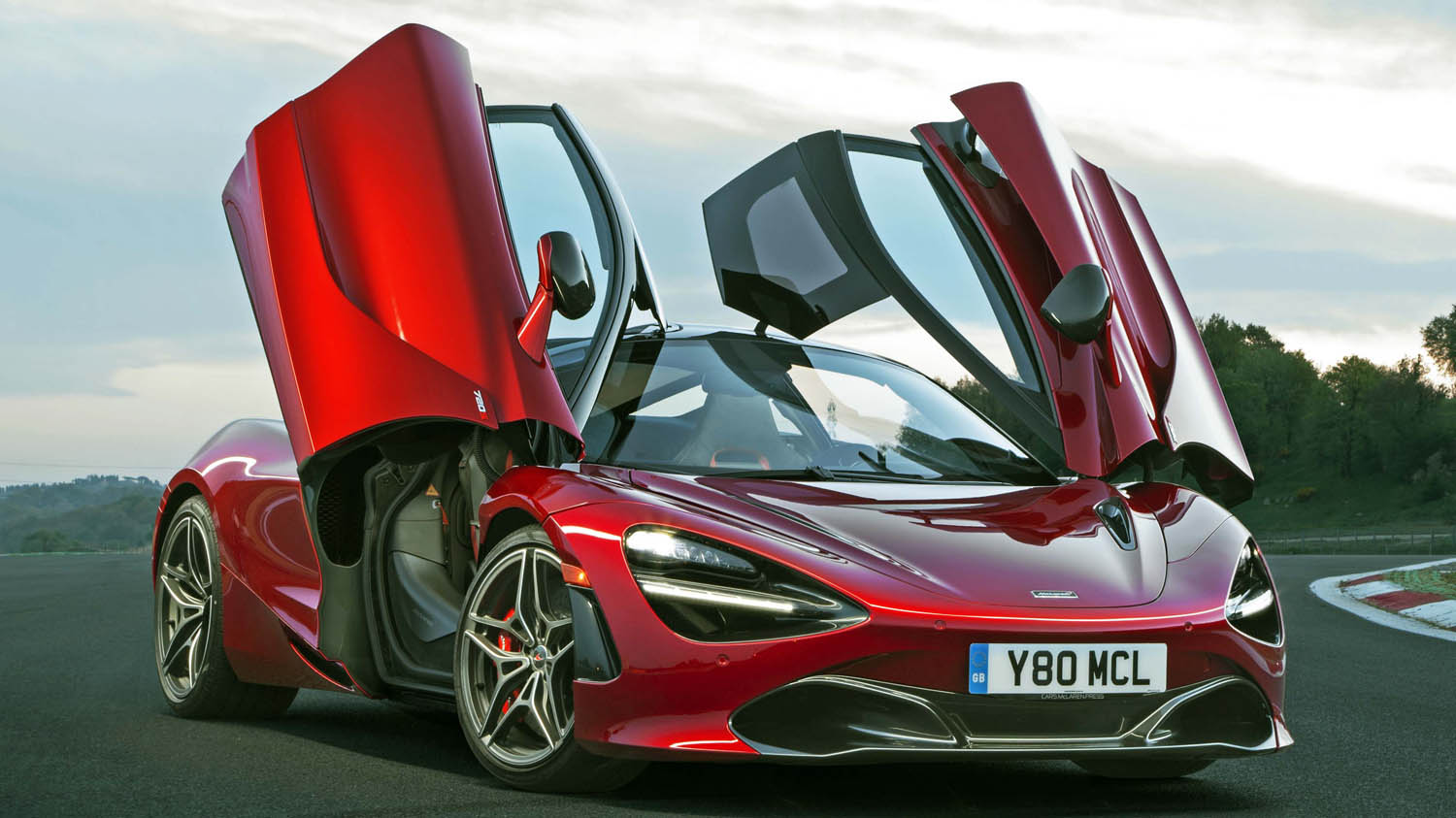
The sophisticated supercar driver environment
The driver is the centre of the action in any McLaren, but in the case of the second-generation Super Series, their requirements are met in ways well beyond the usual dynamic performance attributes. The cabin of the new McLaren 720S is a sophisticated, luxury environment that is the most welcoming in the supercar sector. The perception of space is simply extraordinary and will be immediately apparent to owners of first-generation McLaren Super Series and other supercars alike.
All the surfaces have been pushed as far away from the occupants as possible and the engineering ability to deliver a glazed C-pillar has made a significant contribution to the feeling of space. Not only is there room for two people to sit in comfort, there is also space behind the seat backs for two soft holdalls or airline carry-on luggage bags – equivalent to 210 litres – in addition to the 150 litres under the front panel.
The new 720S can call on more than simple interior expanse to delight owners. Even the simple act of approaching and entering the car has been fastidiously considered: unlocking the new McLaren Super Series engages a ‘Welcome Sequence’ that consists of mirrors unfolding, indicator lights sweeping and courtesy lighting coming on, as well as illumination of the engine bay, bathing the cast-aluminium air intake plenum with McLaren Speedmark logo on top of the engine in red light.
Opening the door triggers a second sequence of events that sees the Folding Driver Display deploy and the operating system come to life both on this display and the central infotainment screen. Together, these two high-definition screens comprise the McLaren Driver Interface – an advanced, integrated new way of sharing information with the driver that is designed to be immediately familiar to McLaren owners, but runs on an entirely new system architecture developed in conjunction with JVCKENWOOD.
In Full Display Mode, the Folding Driver Display presents the required array of information on an upright, high-definition TFT panel, with three different layouts and colour variations depending on whether the car is being driven in Comfort, Sport, or Track modes. At either the touch of a button, or automatically if linked by choice to the active dynamics functionality, the display slides down to Slim Display Mode. In this position, only the minimum of required information is displayed in a strip, further improving forward visibility and allowing the driver to place the car even more precisely in a corner. This is an ideal condition for drivers wanting the minimum of distraction, for example when extending their McLaren 720S on a track.
The primary hub for interaction between a driver and their new McLaren 720S is the Central Infotainment Screen, an 8-inch display with rich crisp graphics that presents the vehicle’s electronic functions to suit driver preference. Audio, media, navigation and other convenience features – such as mood lighting colour – are all controlled using this screen, which has applications displayed on a vertical carousel as well as several dedicated quick-access keys, with climate control functions permanently visible across the bottom of the screen.
One of the driver engagement features on the McLaren 720S that is expected to generate significant owner-interest is McLaren Track Telemetry. The latest version of this real-time data capture application, which has been completely redesigned for the new 720S, now features measurement of throttle angle and lateral/longitudinal G-force in addition to timing and speed measurement. A driver can set up a track session using the central screen and then complete the laps and analyse the data, including sector times within a lap.
Summary telemetry and live timing data can be viewed in the Full Driver Display during driving, aiding track performance by placing data directly in the driver’s eyeline. More comprehensive information, including G-maps, throttle position and full lap history, is available from the central screen, Track Telemetry Cameras can record laps from inside the cabin. All telemetry data collected can be downloaded to an external medium for detailed review after driving and the video footage can be analysed alongside the data to allow drivers to perfect their skills by reviewing their performance.
Driver and passenger sit as standard in sports seats that support and cosset in equal measure – this is a car built for distance-driving as well as short journeys – and owners can choose to replace the standard leather-wrapped sports steering wheel with colour-matched, carbon fibre enhanced or Alcantara® options.
All the switches and controls in the new McLaren 720S cabin are as precisely engineered and tactile as they are visually appealing, with form and functionality in perfect harmony. As well as providing significantly-improved ergonomics compared to the experience in a 650S, switches are machined from solid aluminium, in keeping with the air of sophisticated luxury evident throughout the interior, ensuring that drivers enjoy the ambience of their environment as much as they do the driving experience.
An extensive range of carbon fibre parts – both interior and exterior – are available as options for owners wanting to personalise their new McLaren 720S and there is of course always the possibility of engaging McLaren Special Operations (MSO) to produce a truly bespoke car.
The exterior colour palette comprises 20 colours, including different greys, whites, blues, and reds – plus of course, McLaren Orange. Seven of the colours are newly developed for the 720S. Owners wanting to explore hues beyond the standard offering can again turn to MSO for an almost infinite range of colours.
Normal service intervals for the new McLaren 720S are one year or 20,000 km (12,400miles), whichever occurs first. New vehicles will be covered by McLaren’s Vehicle Warranty, which covers the vehicle for three years from purchase without mileage limitation. Paint surface is warranted for three years; visible cosmetic corrosion for five years and perforation corrosion of the vehicle body for 10 years.
The new McLaren 720S is also eligible to be covered by the McLaren Extended Warranty; available from time of first purchase in 12 or 24 month periods until the vehicle is 10 years old, the warranty makes it possible to cover a 720S for up to 12 years.
